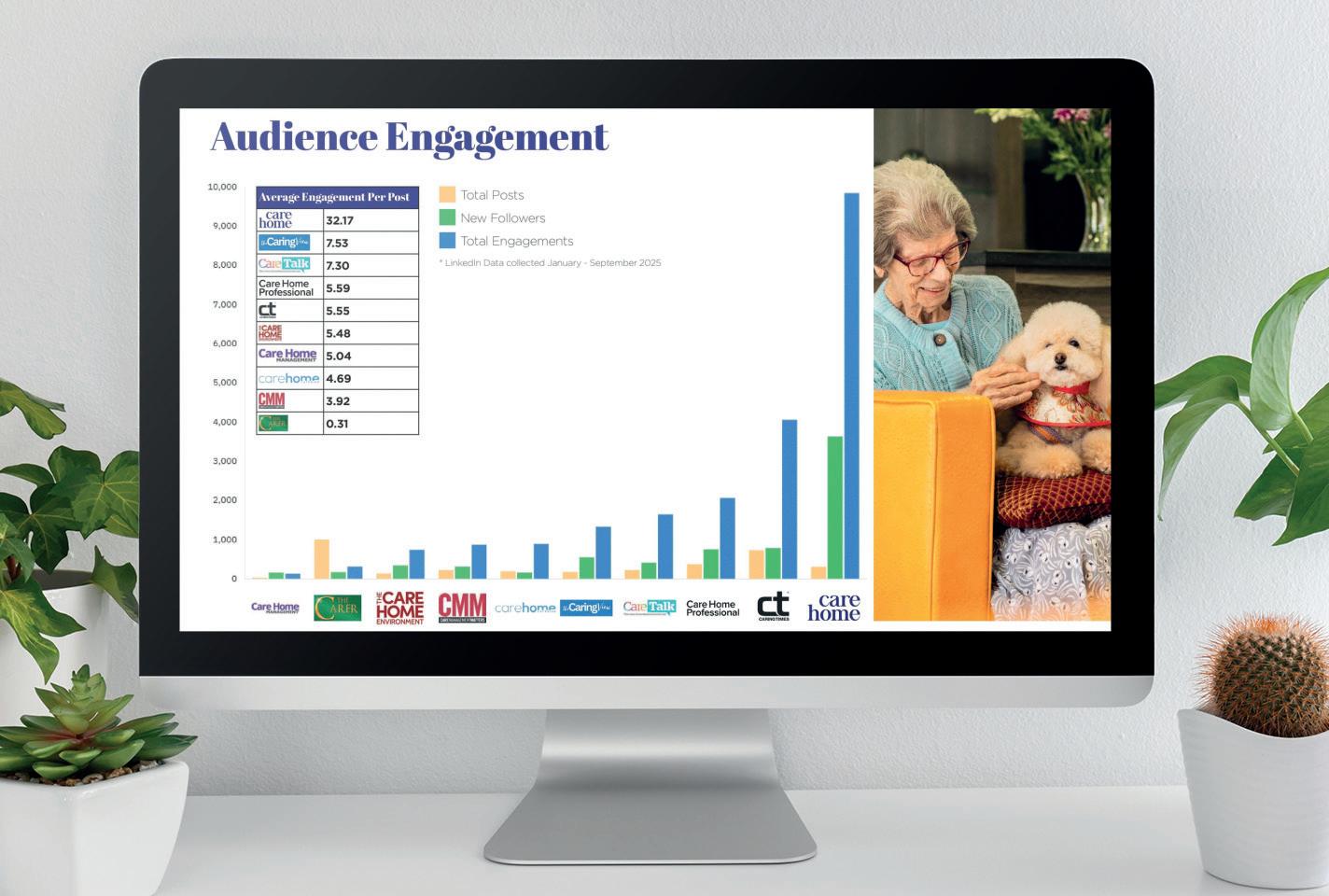




Every care provider is different—your software should reflect this. CarePoint 365 is designed to fit your processes, your teams and your unique approach to care—not the other way around.
From complex rostering and payroll integrations to employee self-service, referrals management, managerial oversight and customisable workflows for care planning, CarePoint 365 ensures seamless, scalable, and fully integrated care management that meets your specific needs.
Built on the Microsoft Power Platform, our system adapts to you—offering effortless control, automation and efficiency without forcing you into a rigid, one-size-fits-all SaaS model. Because great care deserves great technology –

The care sector faces increasing pressures: high staff turnover, unpredictable scheduling, fragmented data management and ever-evolving compliance demands. These challenges not only affect workforce morale but also impact the quality of care delivered.
CarePoint 365 is a comprehensive, purpose-built solution that helps care providers streamline HR processes, optimise workforce management, manage client relationships and ensure compliance with ease.
Efficient Rostering & Workforce Management
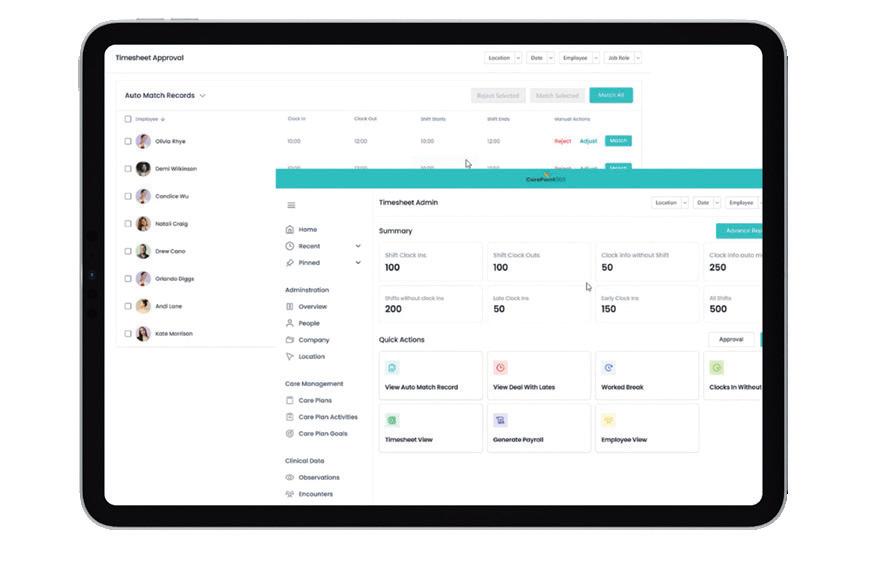
Manage shift patterns for fair and optimised staff allocation.
Monitor attendance, absences and overtime in real-time.
Minimise scheduling conflicts with intelligent rostering.
View care hour commitments against rostered hours.
Accurate Payroll & Time Management

Automate payroll, track hours and manage pay structures.
Predefine pay periods and handle varying pay lengths.
Manage overtime calculations accurately for any pay period.
Calculate leave accurately and deduct correct days from staff shift patterns.
Minimise errors and administrative workload.
ResidentCentred Staffing & Care Planning

Assign the right staff based on skills and resident needs.
Link care plans, employee records and shift assignments.
Empower Staff & Enhance Work-Life Balance

Self-service mobile app for managing schedules, leave and records.
Instant notifications and real-time updates improve engagement.
Empower managers to oversee leave requests, staffing compliance and care allocation.
Comprehensive CRM & Referral Management

Centralise client records, communications and referral tracking.
Manage enquiries and admissions efficiently with automated workflows.
Native integration with the full Microsoft stack, including Outlook, Teams, and Power BI.
Unified data across departments for seamless client and staff management.
Facilities & Asset Oversight
Track work orders, equipment and planned preventative maintenance.
Ensure safe, compliant work environments with automated checks.
Coordinate repairs and contractor activity.

Chief Editor
Jade Evans jade.evans@cimltd.co.uk
Publication Manager
James Davies james@carehomemagazine.co.uk Tel: 01795 509 112
Credit Facilities Manager
Gwen Lee creditcontrol@cimltd.co.uk Tel: 01795 509 103
Design and Production
James Taylor james@cimltd.co.uk
Grant Waters grant@cimltd.co.uk
Marketing Manager
Lucas Payne lucas@cimltd.co.uk
Head of Digital
Xhulio Bishtaja press@carehomemagazine.co.uk
Social Media Manager
Lily Lawson press@carehomemagazine.co.uk
Director
Tom Woollin tom@cimltd.co.uk
Managing Director
John Denning
As we journey closer to the year drawing to a close and the festive season creeps in around the corner, our November edition is dedicated to two of the most uplifting, and important, aspects of care home life: Activities and Christmas.

Engaging, inclusive activities are at the heart of every thriving care setting. This month, our main feature offers expert guidance on how to plan the perfect activities calendar - one that balances creativity, resident input and meaningful engagement throughout the year. We also shine a light on our regular Activity of the Month, celebrating resident-led initiatives that build community. These inspiring projects show how empowering residents to lead the way can nurture connection, confidence and a true sense of belonging.
Of course, as November unfolds, many care homes are turning their attention to Christmas preparations... a personal favourite of mine! While it’s a season of joy, it can also bring mixed emotions for residents who feel the absence of loved ones or familiar traditions. Our Essential 5 feature provides five practical ways staff can support residents who may feel loss or isolation more keenly during the holidays - offering simple, compassionate strategies that make a world of difference.
We then dive into our main piece within the Christmas focus, Keeping Traditions Alive, exploring how homes can honour and adapt residents’ cherished customs, from treasured family recipes to beloved songs and decorations, to create celebrations that feel both festive and deeply personal.
As always, this issue is brimming with expert insights, the latest industry news, and promotional highlights from our valued partners and contributors - all curated to support and inspire those who make care home life so special.
As you turn the pages of this November edition, may you find fresh ideas and a touch of festive spirit to carry into the weeks ahead.
Jade Evans, Chief Editor

Wondering what’s currently happening within the care sector? We reveal all as we share insights into some of the latest news.
With the activities calendar integral to a successful care home, we offer advice for activities coordinators on how to balance variety, inclusion and energy.
This November, we focus on resident-led initiatives that build community and explore how residents can contribute and lead projects.
As part of our Christmas focus, we share five practical ways staff can support residents who may feel loss or isolation more keenly during the holidays.
Honing in on the value of keeping traditions alive, we look at how care homes can adapt residents’ personal traditions into the home’s celebrations.
In line with the festive focus, EcoScent share details on why Care Homes should change up their scent throughout the festive period, how EcoScent can help with this and the benefit it offers.
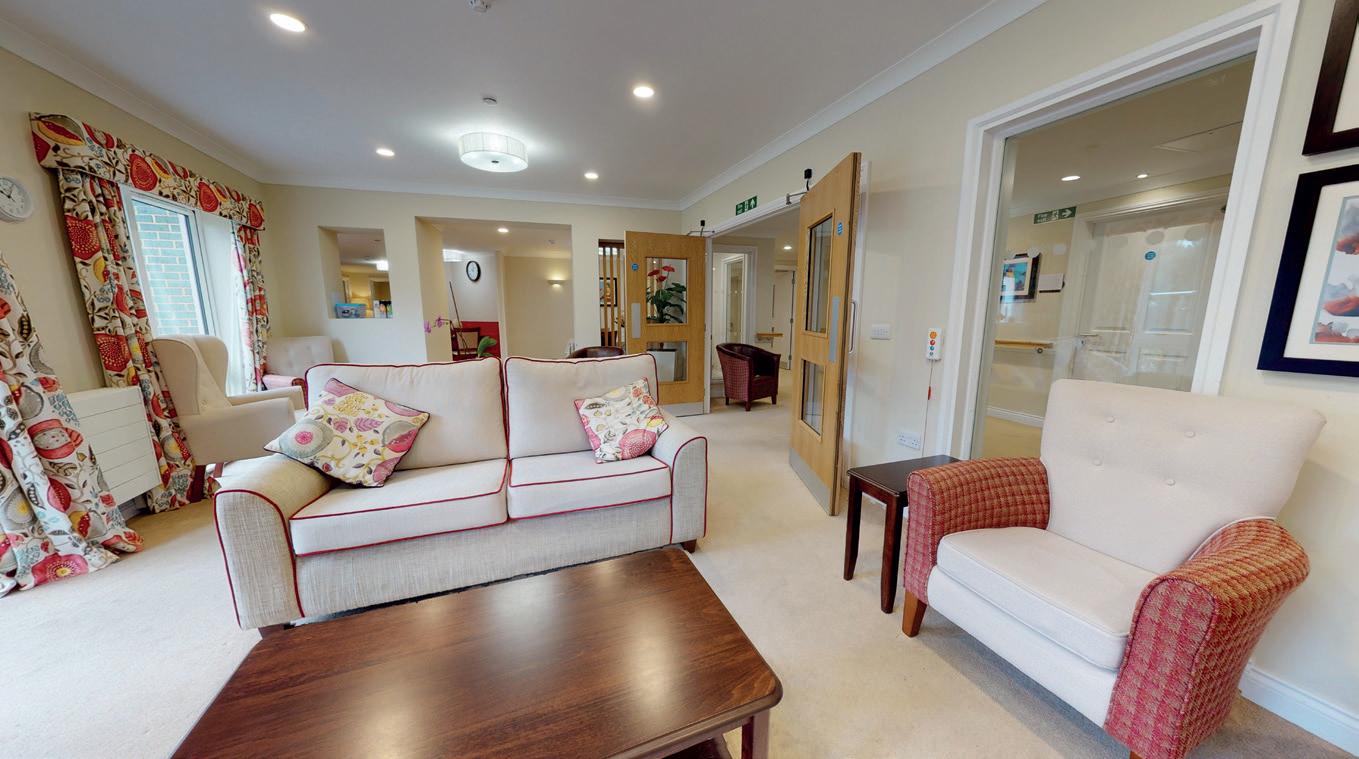

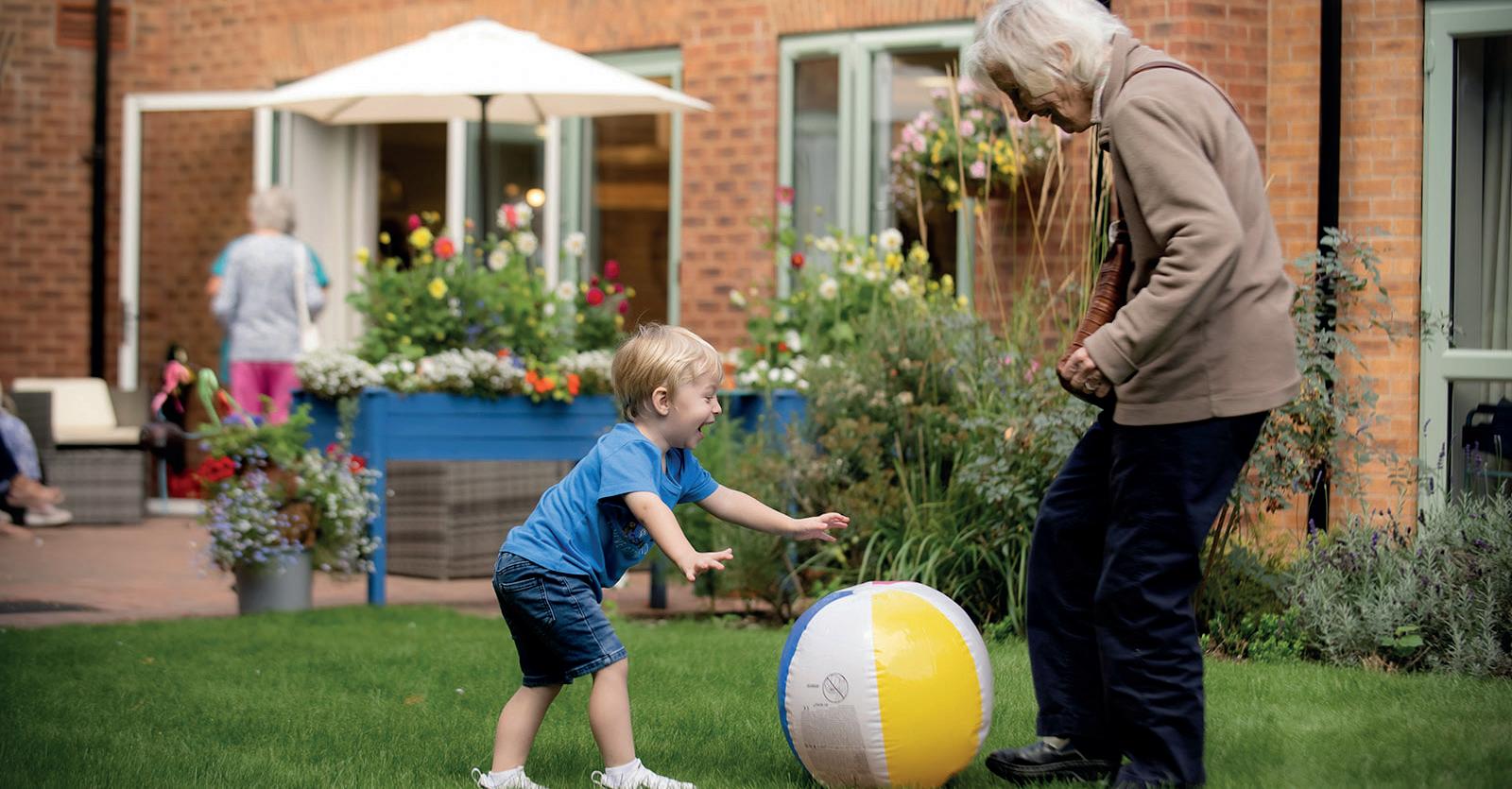
10 12 18 28

Holbeach Meadows Care Home in Holbeach, Spalding is celebrating after being awarded the highest possible rating of ‘Outstanding’ by the Care Quality Commission (CQC) - at its very first inspection since opening in 2022.
The 66-bed home, which provides residential, respite, palliative and dementia care, achieved Outstanding in the key areas of Caring, Effective, and Well-Led, and Good in Safe and Responsive, resulting in an overall Outstanding rating.
The CQC praised the home for its exceptional leadership, compassionate culture, and personcentred approach that empowers residents to live with dignity, choice, and independence.
Inspectors described Holbeach
Meadows as “a vibrant, nurturing place where people can truly thrive,” highlighting that peoples experiences of the home were “overwhelmingly positive” and residents felt “safe, respected, and genuinely cared for.”
Feedback from residents and families featured heavily in the CQC report, with many describing Holbeach Meadows as “warm, welcoming, and family-like.”
Inspectors also praised the home’s creative approach to wellbeing, with activities including pet therapy, cinema screenings, reminiscence sessions, and a dedicated sensory room to support relaxation and emotional health.
Home Manager Gemma Woodcock said she was “over the moon” with the result.
She added, “We are absolutely
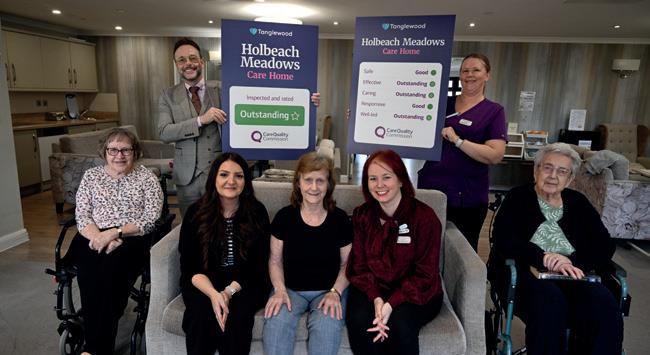
thrilled to have achieved an Outstanding rating - especially at our very first inspection. This recognition is a reflection of the passion, dedication, and teamwork that goes into everything we do here.
“Our goal has always been to create a home where people can live with dignity, independence, and joy - and where families feel truly part of our community. I’m incredibly proud of our team and what this means for the people of Holbeach.”
Hartford Care has achieved the prestigious national Gold Standards Framework (GSF) Quality Hallmark Award for end-of-life care at its Woodlands House care home in Woodlands, Southampton. The accolade, awarded after rigorous assessment by GSF, recognises the UK’s most exceptional health and social care providers.
Alongside high scores in all areas of evaluation, the assessor’s report highlighted how friendly and welcoming the Woodlands House team are, interacting with the residents in a professional and compassionate manner, with residents found to be happy and well cared for.
Katie Dixon, Home Manager at Woodlands House, said: “We are honoured to achieve the Quality
Hallmark Award in what is our second consecutive assessment. The reaccreditation is testament to the commitment of our compassionate and hard-working team, who I’m incredibly proud of. We’re dedicated to delivering high quality care and support to our residents, helping them live fulfilled lives throughout their time with us.”
Julie Armstrong-Wilson, Chief Operating Officer for Gold Standards Framework, said: “We are delighted to congratulate all the organisations that have achieved accreditation and received the Quality Hallmark Award this year. This year we have had the most organisations apply for accreditation since we commended the accreditation process over 15 years ago.”
Nestled in the New Forest,
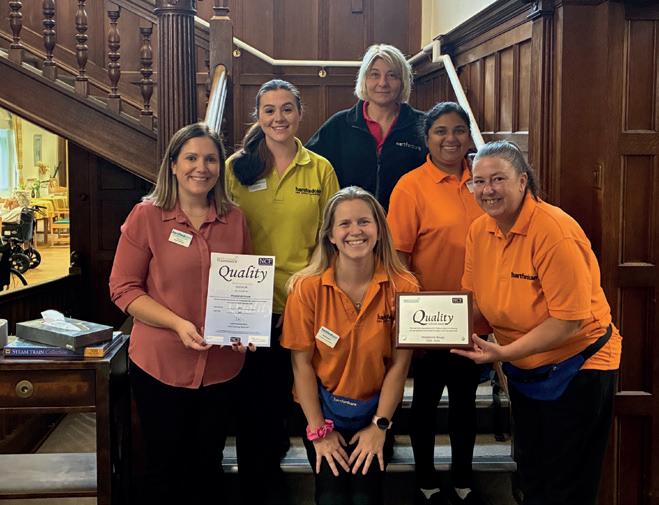
Woodlands House is steeped in period charm and is surrounded by extensive and secluded gardens offering plentiful accessible space for the residents to relax and watch the world go by. It has 38 generously proportioned en suite bedrooms, along with a spacious lounge, dining room and library and offers residential, dementia, end of life and day care, along with respite breaks.
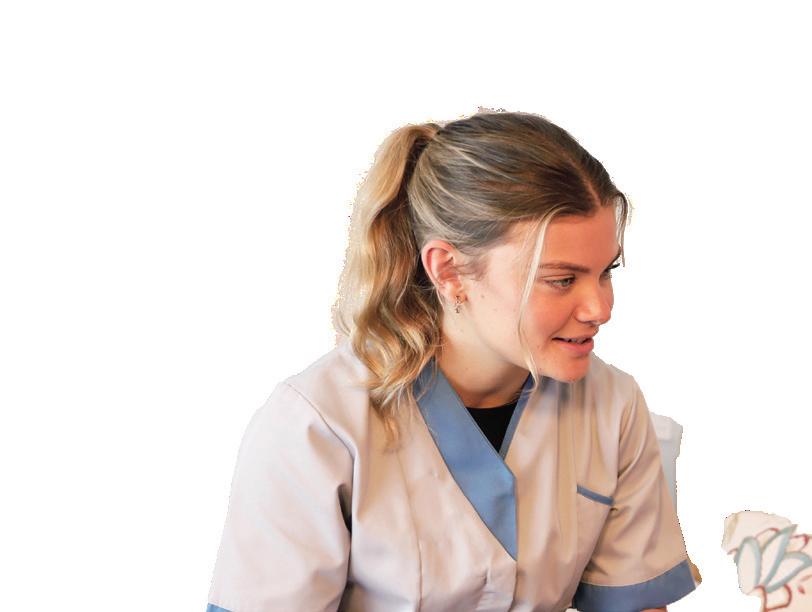
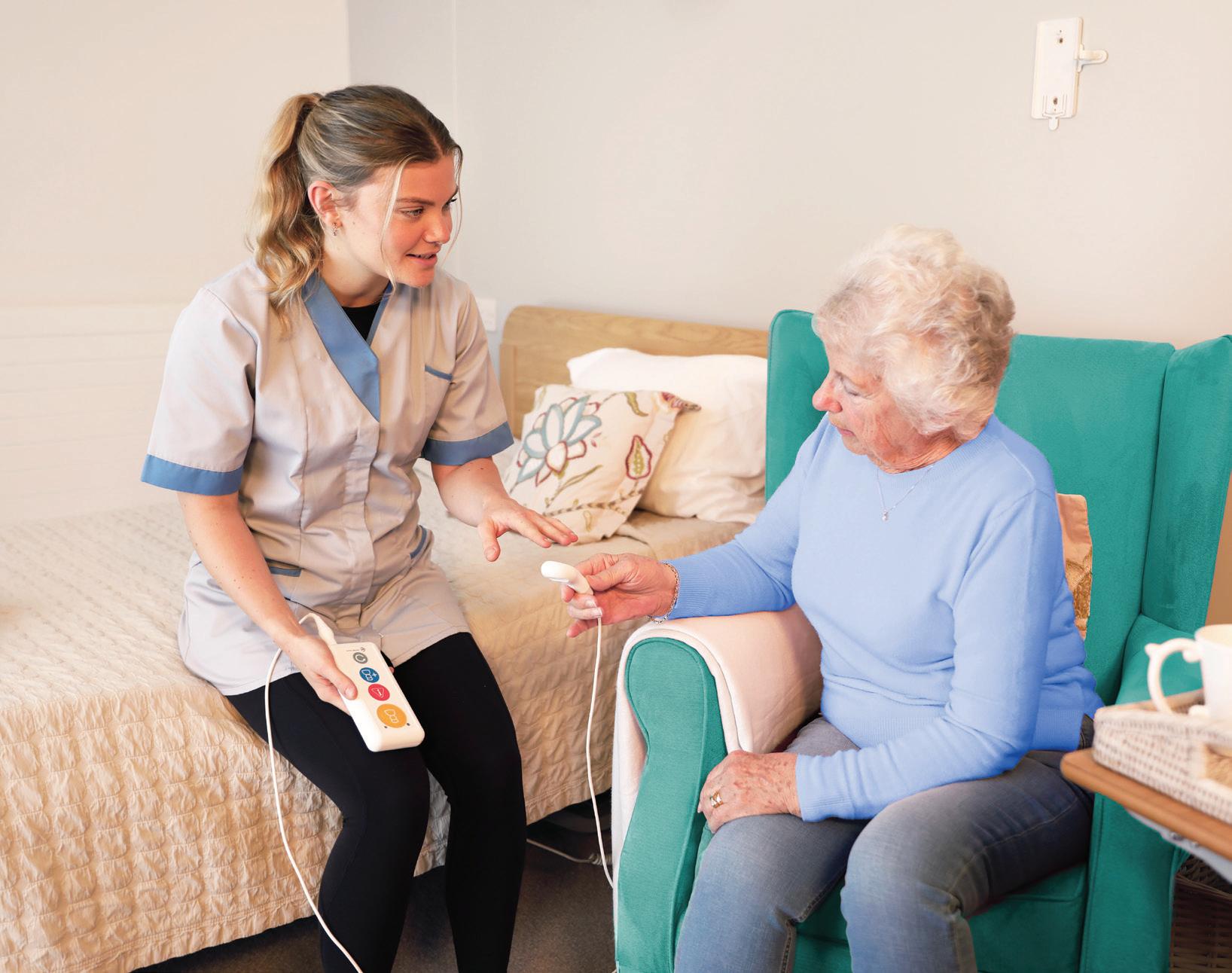
Longstanding care business Fisher Care Group has utilised a £21m loan from Triodos Bank UK to fund the purchase and development of two care homes, expanding its provision across the North of England. The homes will add 136 beds to the care group’s portfolio, as it seeks to increase its impact in the care sector.
Located in Bridlington, East Yorkshire, The Maltings Care Home will be a 59-bed care home designed to provide compassionate and personalised care. The building has been purchased complete and ready for use, however, Fisher Care plans to develop the facility to meet its specified standards and to deliver consistent, premium service quality. It is expected that the home
will be operational by March 2026.
Set in Leeds, Atkinson House will be a 76-bed care home designed for a mixture of care needs. Although the building is complete, Fisher Care plans to develop the home to a top-level standard for the new residents.
Fisher Care’s Operations Director, Joshua Fisher said: “These two additions to our portfolio of homes means that we can expand on our mission of providing places that immediately feel like home, where residents and their families can spend precious time together.”
Triodos Bank UK is a specialist, impact-focused lender across social and environmental sectors, including healthcare, education, childcare, arts and culture and recreational sectors.
Barchester Healthcare is celebrating its talented Customer Experience team who have been victorious in not one but two categories at the prestigious UK Customer Experience Awards which took place at Wembley Stadium last month. The premium care home provider which operates 268 care homes and private hospitals spanning the whole of the UK, entered two projects, both of which were named winners in their respective categories.
Established in 2010, the UK Customer Experience Awards are the most recognised customer experience focused awards in the UK, with entries across multiple sectors from globally renowned brands such as McDonalds, Sainsburys and HSBC. Barchester Healthcare was the only
company from the health sector to be shortlisted in either of its categories.
Each year Barchester conducts a mammoth customer survey to collate feedback from its 13,500 residents and patients, and their loved ones. Entitled ‘Tell Barchester,’ the survey is an opportunity to gather the opinions of the people living in Barchester’s homes and hospitals, along with those of their families and loved ones. Every single piece of feedback given in the survey is considered and acted upon. Tell Barchester was named overall Gold Winner in the ‘Best Use of Customer Insight’ category.
As part of its intensive digital transformation initiative, over the past two years Barchester has designed, developed and delivered a new world leading CRM system
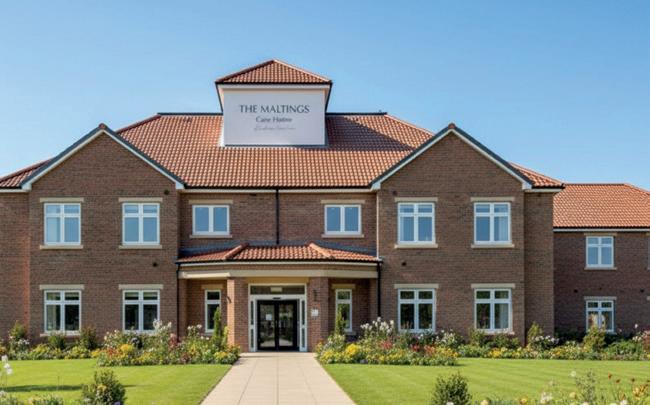
Ben Honeyman, Senior Relationship Manager at Triodos Bank UK, said: “As part of our focus on wellbeing at Triodos Bank UK, we are committed to financing values-based care providers and supporting the changing needs of the healthcare sector. Fisher Care’s values as a care provider matches those that we carry with us at Triodos and so we are really pleased to be able to support them in their growth.”

powered by Salesforce. The new system ensures that interactions from customers from point of looking for a care provider to living happily in a care home or hospital is seamless, supporting Barchester colleagues to increase efficiency and providing a better experience to customers through data only being inputted once. The system was awarded Silver Winner in the ‘Best Use of Technology’ category. Anna Shirley, Chief Customer Officer for Barchester Healthcare, said: “Our ethos is quality first and it is a great testament to this vision to be recognised for two awards that showcase how we are always listening to residents, families and the community to continually improve.”



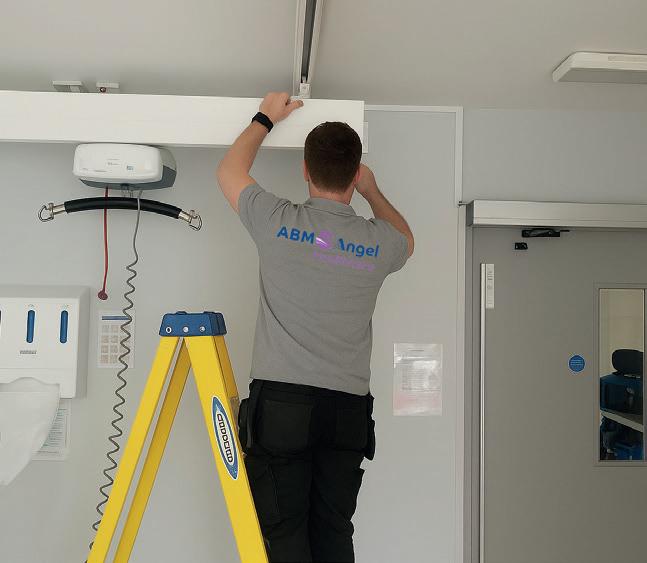


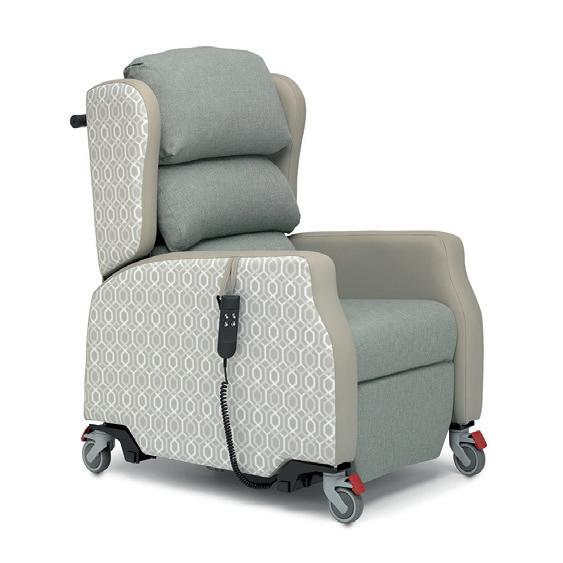
Care Solutions From dementia-friendly products to PPE, cleaning supplies, medical equipment, continence products, and housekeeping essentials - we provide everything you need to ensure quality care and a safe environment.
Equipment Solutions We supply profiling beds and mattresses, hoists, slings, and baths to meet a wide range of care requirements. Contact us to discuss tailored equipment options for your needs.
Furniture Solutions We supply and install a wide range of healthcare-grade furniture in various areas including bedrooms, lounge areas, dining areas, and offices. Please call us to discuss your furniture requirements.
Office Solutions Our comprehensive range includes inks and toners, paper products, filing accessories, and everyday stationery. Everything you need to keep your office running smoothly.
Workwear Solutions We provide uniforms, including tunics, scrubs, and chef wear. If you have specific needs in these areas, please contact us to explore our range and discuss your requirements.
Catering Solutions From tableware and kitchen appliances to cookware and refrigeration, we offer catering solutions for both residential and commercial settings.
Servicing Solutions Our expert team provides LOLER & PUWER compliance checks, call-outs and repairs, technical support, and access to a dedicated service portal.
Sponsored
By

Brendoncare Otterbourne Hill prides itself on innovation, being one of the first care sites in the UK to integrate three services under one roof. Since opening in 2018, it has earned a reputation for providing high quality nursing and dementia care; and a place offering a vibrant community for older people in the Hampshire village of Otterbourne midway between Winchester and Eastleigh.
Otterbourne Hill embodies the founding vision of The Brendoncare Foundation – a Winchester-based charity established in 1984 by local GP, Sir Ronald Gibson. His vision was to offer dignified, personalised care that adapts to each person’s changing needs.
The three services under Otterbourne Hill’s roof are: Otterbourne Court, the care home providing nursing and dementia care for up to 64 residents, divided into smaller households of 16 people to foster a close-knit, family-like atmosphere. Second is
Otterbourne Mews, a development of 20 rental apartments, 15 with two bedrooms and five with one bedroom, designed for individuals and couples living with dementia, enabling them to stay together in a supportive, homely environment.
Finally - Otterbourne Community Hub, the heart of the site where
the care home residents, Mews residents, and people from the local area can get together to enjoy activities, clubs, and shared experiences, breaking down barriers between care and community.
Charlotte Chiutare, General Manager, Brendoncare Otterbourne Hill, said: “It’s the way these three


services work together that makes us truly special.”
The building itself is a trailblazer for modern, dementia-friendly design. From strategically placed lighting and colour contrasts to intuitive layouts and discreet security features, every detail supports independence and wellbeing.
But the whole focus is on helping residents to live happy, fulfilling, independent lives.
Residents can participate in the volunteer-led community clubs that Brendoncare runs at the hub. These include gardening, seated exercise,
Tai Chi, and yoga. Two dementiafriendly clubs, Memory Lane Café and Singing for the Brain, provide stimulation and connection.
For clubs such as Singing for the Brain, Otterbourne Hill links up with other local care partners to facilitate the activities.
Technology plays a quiet but powerful role. Acoustic monitoring alerts carers if help is needed without disturbing the residents.
A team of volunteer Digital Champions leads Otterbourne Hill’s newly launched Digital Café. Their expert help for older people includes setting up tablets, smart

phones, and laptops, helping them use social media, shop and buy tickets online.
Charlotte is proud that Otterbourne Hill is actively challenging the stigma that care homes are daunting or intimidating places. “Seeing so many people come in and out really helps.
“That said, it’s incredibly important we remember that this is someone’s home. Our carers fully understand that the residents are at the heart of everything we do. This is always evident in the care they give,” she said.
However, Charlotte is not afraid to think outside the box; in fact, past visitors to Otterbourne Hill have included monkeys and penguins. “Each year, we have an outing to an external Christmas lights show in the area. Often, they are new experiences for residents which they can go to and enjoy with their families.”
With high occupancy rates and glowing referrals from families and GPs, Otterbourne Hill’s reputation speaks for itself. But for Charlotte, the real reward is seeing her team recognised. “It’s easy to overlook the impact of our care when it is done so seamlessly. But the difference we make is huge –and my team truly deserve that recognition.”

How Visual Assistance Technology Can Transform Elderly Care.
Across the UK, the demand for high-quality care is rising, yet staffing capacity is shrinking. Families expect personalised support, yet workforce turnover and burnout often get in the way.
At the centre of this lies a hidden challenge… Accessibility.
According to research from the RNIB, nearly 50% of care home residents live with blindness or low vision, and yet many environments are designed for those who can see clearly. The result is that residents who might otherwise live confidently and independently instead rely on overextended staff for basic daily tasks.
However, thanks to advancements in visual assistance technology, powered by AI and secure live video, care providers can close this gap.
For decades, accessibility has unfortunately been treated by many as a compliance box-ticking exercise, but forward-thinking care leaders now see it differently.

Here’s why:
• Staff shortages are at crisis levels: Nearly all care homes and assisted living facilities report workforce shortages, with more than half describing them as severe.
• Resident expectations are changing: Older adults increasingly value autonomy, dignity, and choice; values that inaccessible environments directly undermine.
• Family involvement is evolving: Families want transparency, reassurance, and meaningful ways to participate in their loved one’s care, even from a distance.
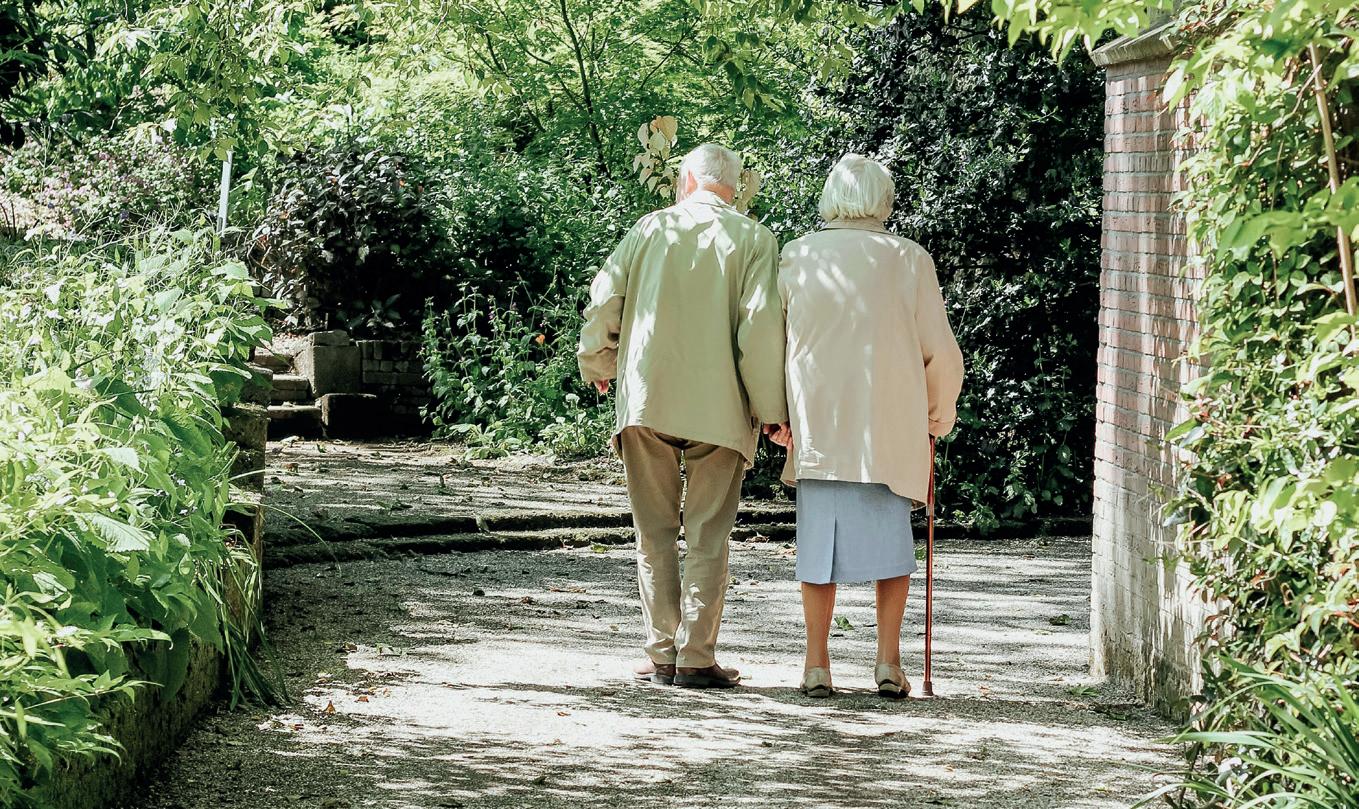
When vision-dependent systems go unaddressed, the ripple effects extend far beyond resident frustration.
Consider a typical day in a care home:
• A resident can’t read the lunch menu. They call a staff member to read it aloud.
• Another can’t distinguish the items on their shelf. They ring for help.
• A resident needs help choosing clothes from their wardrobe. A carer helps them.
• A fourth wants to know which activity is happening next, but can’t read the printed schedule. Another interruption.
Each moment is small. But across dozens of residents, these microtasks pile up. Two minutes here, five minutes there, and soon hours of staff time are lost weekly to tasks that could be automated or handled remotely.
Worse still, inaccessible environments completely erode confidence and often happiness. Residents may withdraw from group activities, feel anxious

navigating shared spaces and they may rely more heavily on staff than they want to.
This is where the latest visual assistance technology such as AI-powered image recognition, realtime video assistance, and familyenabled support networks can truly make a transformative difference.
At their core, these tools do one thing: they give power back to the residents through greater independence.
• A printed menu? Instantly read aloud by an app.
• Old family photos? Described in detail in seconds via AI.
• A thermostat screen or remote control? Interpreted through a secure live video session.
• Even more complicated tasks, such as filling out a form or enjoying a new activity, can become manageable without waiting for staff assistance.
The impact here extends far beyond convenience because every time a resident solves a challenge independently, it builds confidence, encourages participation, and strengthens their sense of agency and dignity.
Additionally, for families, these visual support tools are also a bridge to connection.
Through features like secure video calls or private support groups, relatives can step in remotely to offer help. A daughter in another city can read her
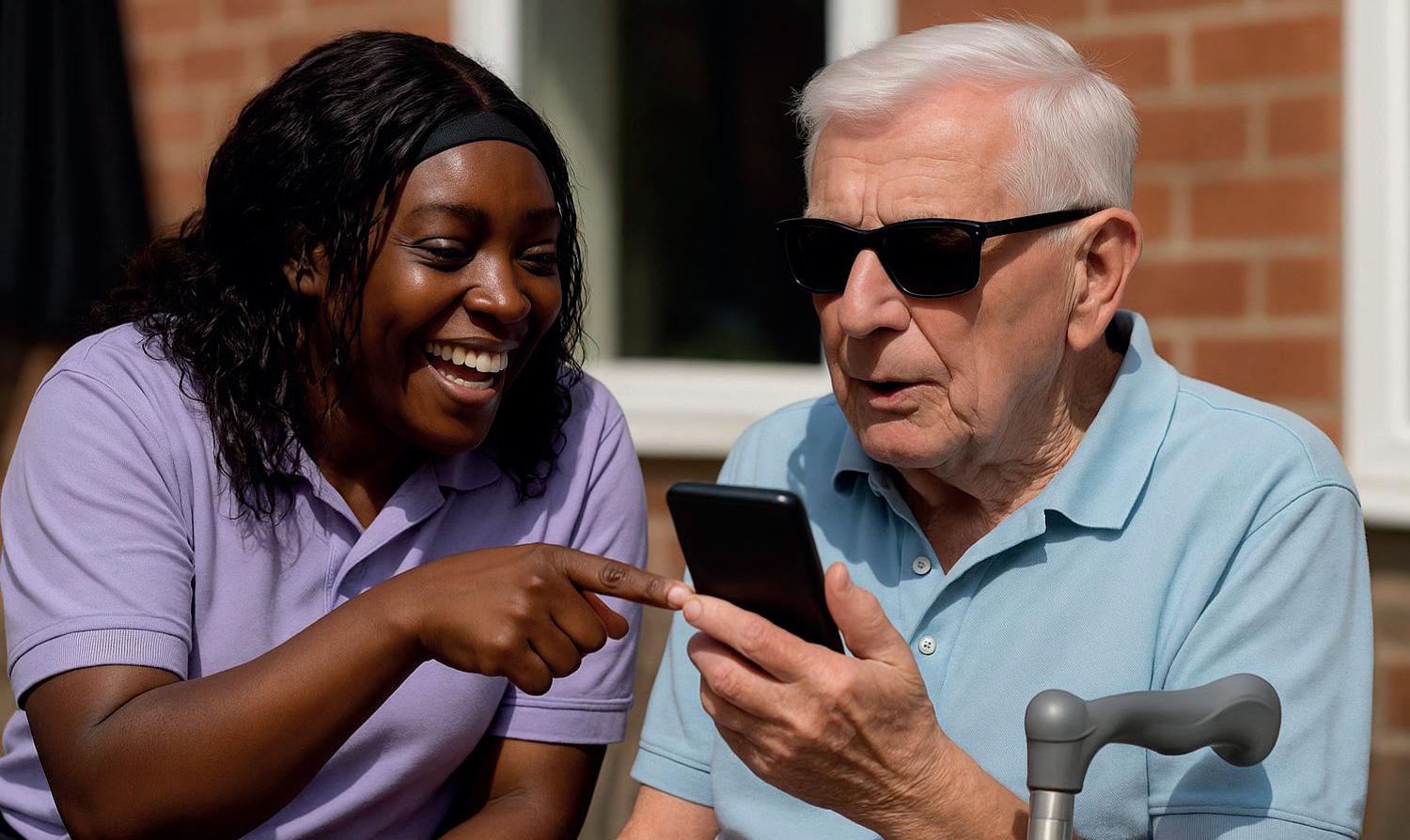
mother’s post or help her choose a necklace for an outing. A son can confirm a thermostat setting or read a letter aloud.
This does more than reduce staff workload. It turns families into active partners in care. It builds trust, reduces anxiety, and strengthens the bond between residents, loved ones, and care providers.
As the care landscape continues to change, one truth becomes clear, and that’s the fact that accessibility should no longer be optional. Care leaders should see it as a foundation for quality, a differentiator in a competitive market, and a driver of operational resilience.
Video support and visual assistance technology represent the next frontier of this evolution.
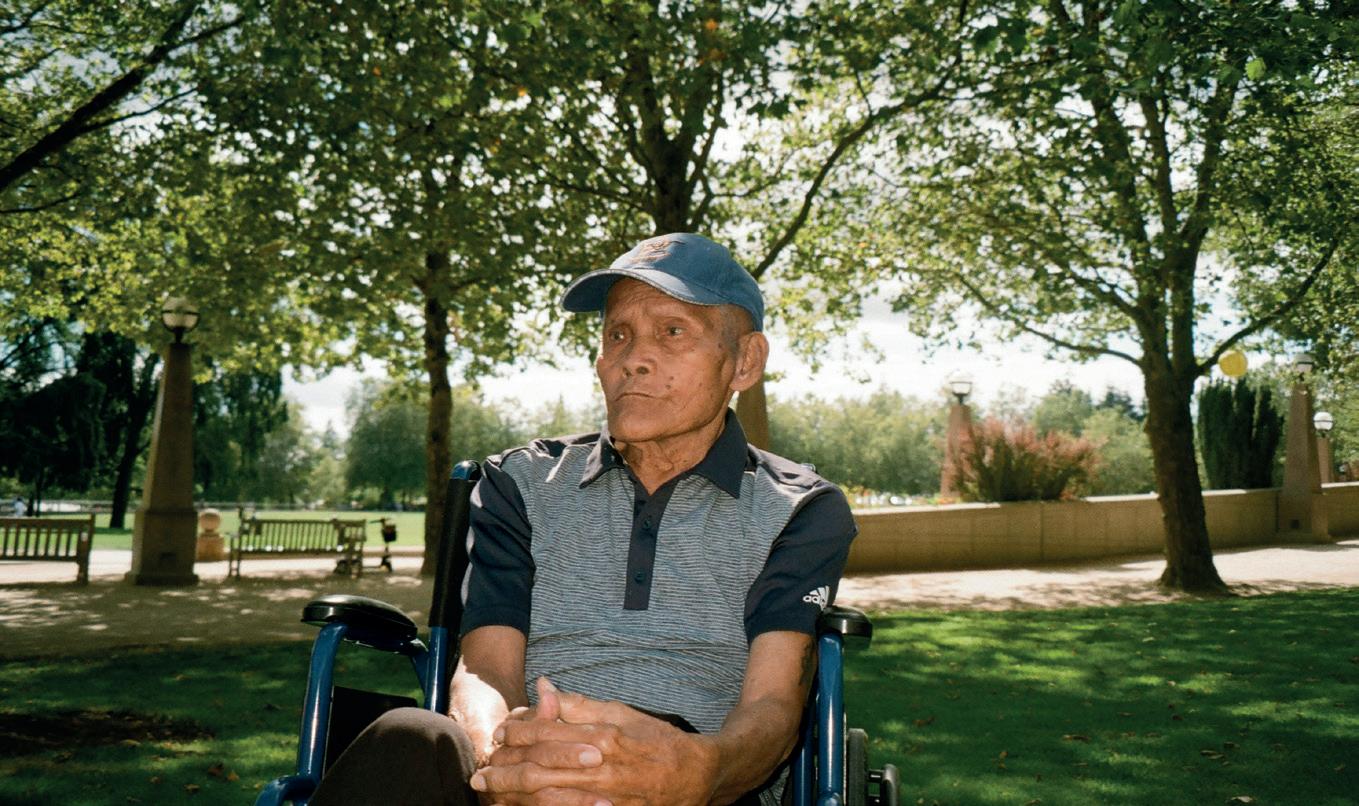
They help care communities do more with less, deliver richer experiences for residents, and meet the rising expectations of families and regulators alike.
The future of senior care will belong to those who see accessibility both as a must have and as an incredible opportunity to put the power back in the hands of residents. Video support tools enable independence, promote happiness, protect staff wellbeing and truly bridge the accessibility gap in care communities.
They transform the care environment from one of dependency and constraint into one of empowerment and connection. And in doing so, they help care communities deliver on their most fundamental promise which is to make every day more dignified, more engaging, and more human.
bemyeyes.com
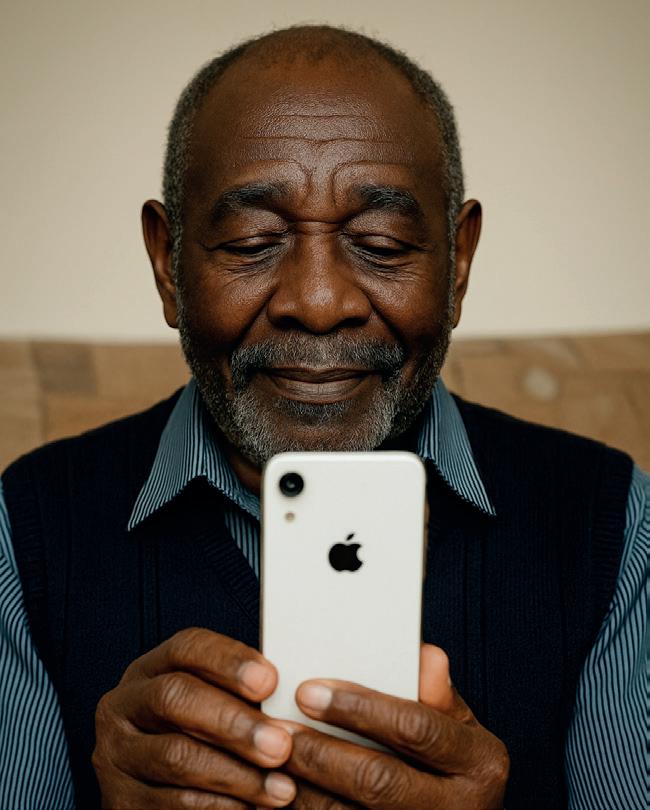
In an industry where efficiency, visibility and compliance are critical, care homes are increasingly turning to modern technology to streamline their financial and operational processes. We spoke with Philippa Leonard, Sage Intacct Team Leader at PKF Smith Cooper Systems, to explore how their cloud-based finance solutions are helping care providers improve control.

Could you provide an overview of the software solutions PKF Smith Cooper Systems offers specifically for the care home sector?
Sage Intacct is a cloud-based finance system which offers multi-entity consolidations, best of class interactive reporting tools, multi-dimensional analysis of data, automatic quarterly updates, integrated budgeting and planning tools, plus collaborative working with its live update functionality.
How does Sage Intacct cater to the unique financial management needs of care homes?
Sage Intacct is a multi-entity platform. Its use of dimensions allows you to have multiple locations (i.e. homes) and filter out reporting in seconds on a care home by care home basis. As well as instant consolidations, Sage Intacct has built in approval policies. This allows care home managers to put in spend requests for approval, giving the finance
team complete oversight and control of the purchasing process. Permissions are managed on a user basis so you can control which elements of the system users can see and which tasks they perform. Furthermore, invoice layouts can be tailored on a customer basis so each customer can have bespoke invoices with the logo and details they are familiar with rather than a ‘one size fits all’. Bank reconciliations are collaborative, so no more waiting for team members to complete before you can log in.
You get live updates and data from the bank feed and can work in the system alongside various users to complete the bank reconciliation efficiently. Your budgets can be added on a location basis or combined to a whole group, resulting in better reporting and allocation of funds. Lastly, tailored reporting dashboards can be instantly filtered and shared (or not shared) with user groups.
What are the key benefits of back-officeautomating operations in care homes using your software?
Full visibility and control across care homes allows more live insight for your head office. Increased automation of office tasks for your care home staff frees up their time, allowing them to spend it with staff and clients on the day-to-day goings on of the homes or strategic work and not tied up in back office paperwork.
How does your software integrate with other systems commonly used in care homes, such as patient management or payroll systems?
Sage Intacct have a suite of Marketplace Partners, this is growing and constantly updating, across a broad range of areas such as payroll, patient management, AP automation, expenses etc. Also, Sage Intacct uses an open API, so if there is not a native integration with

your other systems, we can look to build a bespoke one.
Can your solutions be tailored to fit the specific needs of individual care homes, and how do they scale with the growth of an organisation?
Yes, the system is completely customisable with built-in features such as smart rules, smart events, triggers, custom reports, individual entity settings, user restrictions, report restrictions, customer/ supplier layouts. As mentioned previously, Sage Intacct’s open API allows us to tailor your system in-house as well as connect it with 3rd-parties. In terms of growth, in Sage Intacct you can easily add entities, dimensions and users independently, without the help of your provider. If global expansion is your aim, Sage Intacct seamlessly crosses over into different countries and currencies. Lastly, Sage Intacct is designed to scale with you. You can add additional modules and
integrate with new software as and when the time comes.
Are there any upcoming features or developments in your software that will further enhance backoffice automation for care homes?
Being in the cloud means that tedious and expensive software upgrades are a distant memory. Sage Intacct has automatic, quarterly, system updates that occur overnight; meaning you are never on an old version. The enhancements include additional features or improved processes and are often based on what Sage Intacct users are directly requesting as new functionality or features. User feedback is being listened to, and suggested improvements can be taken into account on future releases. The PKF Smith Cooper Systems Account Managers get full oversight of Sage’s roadmap and are able to share this with you also. pkfscs.co.uk


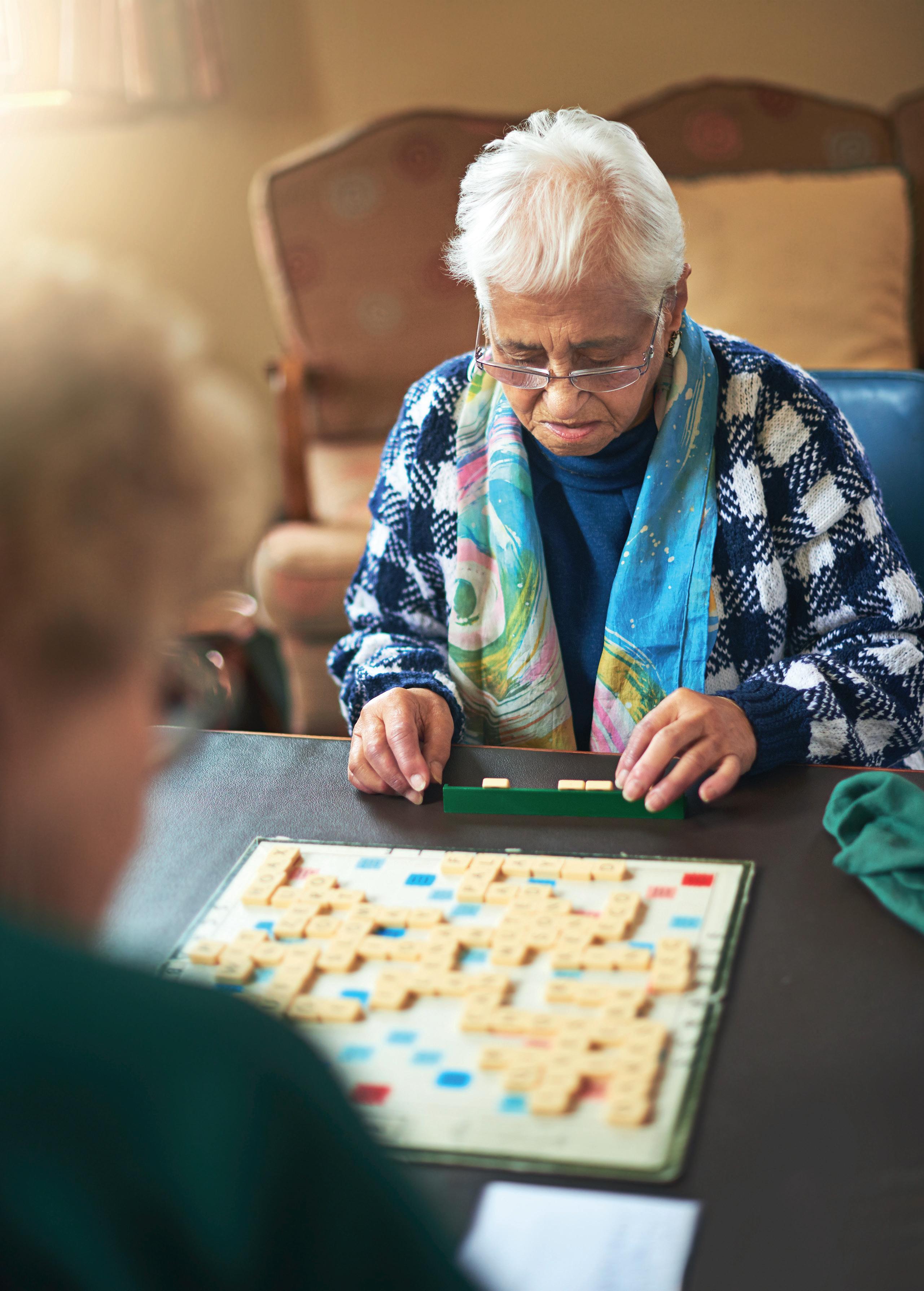
We speak to experts who share tips for planning the perfect activities calendar and how to balance variety, inclusion and energy.

Creating an engaging activities calendar is both an art and a science. In this feature, we bring together leading activities coordinators and wellbeing experts to share their top tips for planning the perfect programme - one that balances variety, inclusion, and energy. From seasonal themes and sensory sessions to spontaneous moments of joy, our experts reveal how thoughtful planning can transform daily routines into meaningful experiences that lift spirits, spark connection, and make every resident feel seen and involved.
At The Burlington Care Home (part of Boutique Care Homes), they ensure the activities calendar
includes options for everyone by offering both group-based and quieter individual activities. The Burlington, Sarah Burt, Head of Lifestyle and Wellbeing, explained, “Some sessions combine social interaction with reflective pursuits, such as poetry groups that encourage discussion around thoughtful themes. Others are kept mor low key, such as craft workshops where residents can focus on creating something while still enjoying conversation.
“This approach allows residents to choose activities that meet their individual needs and preferences.”
In terms of the strategies used to strike the right balance between stimulating, high-energy activities and calmer, restorative ones,
ensuring residents remain engaged without becoming overwhelmed, at The Burlington, the team plans the calendar with a balance of stimulating and calming activities to keep residents engaged without causing them to feel overwhelmed. Sarah said, “Activities are scheduled with appropriate timing and variety, and mindful breaks are included to support rest and recovery. Gentle physical activities and opportunities for social connection are also used to help manage energy levels. The team observes how residents respond and adapts sessions when needed to ensure participation remains comfortable for everyone.”
We asked Sarah about what ways the residents themselves influence the planning process,
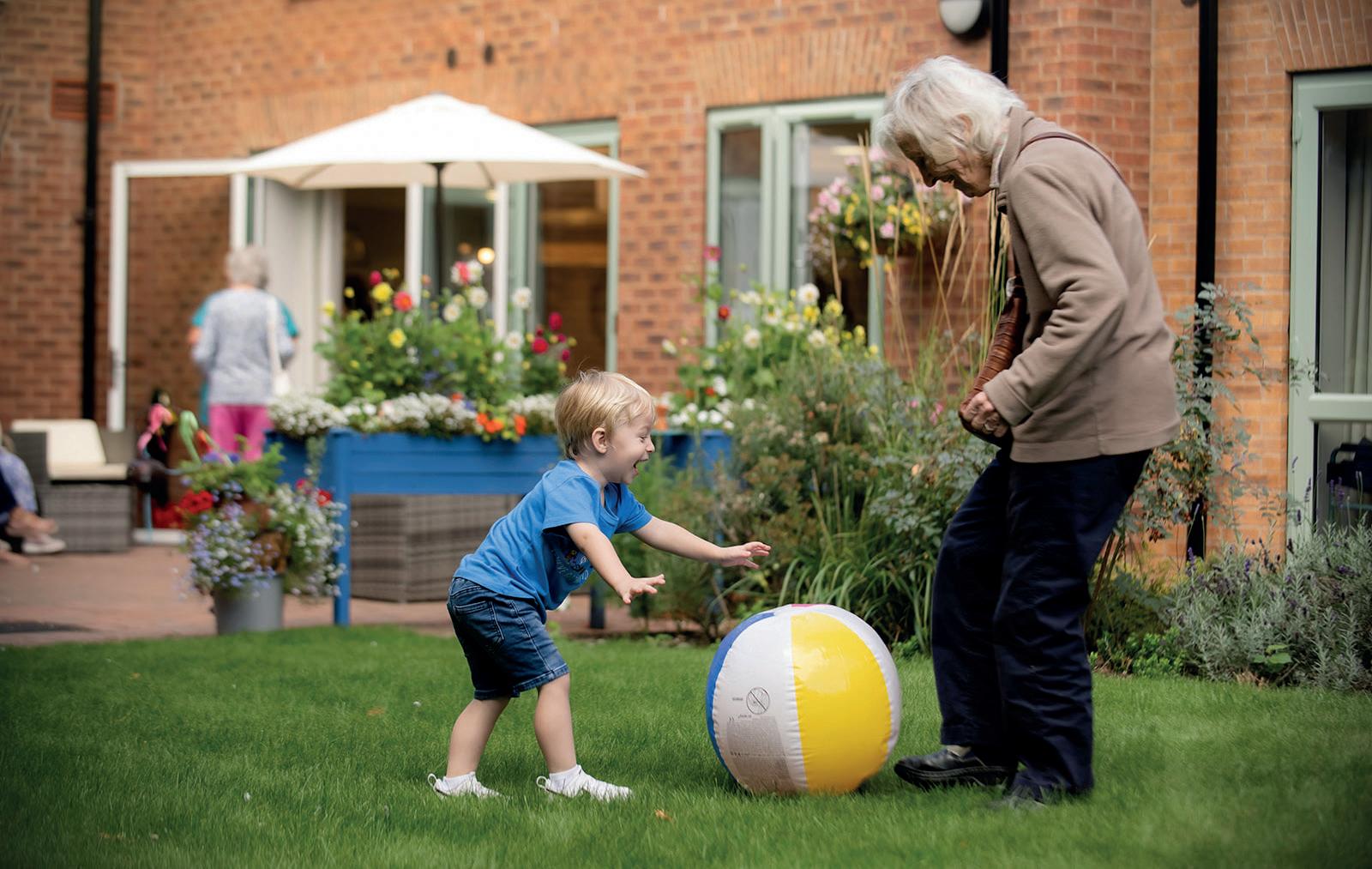
and how she gathers feedback to make sure the calendar truly reflects their interests and abilities, to which she said, “They help shape the activities calendar through weekly meetings and regular one-to-one conversations. Feedback is gathered directly, and for residents who are unable to attend group discussions, input is collected individually. Ideas shared by residents, such as inviting performers, planning arts and crafts sessions, or starting new projects, are discussed with the team and built into future plans. The calendar is adapted to reflect the interests, abilities, and preferences of those living in the home.”
A good example of an activity or initiative that particularly embodies Boutique Care Homes’ approach to inclusion, creativity, and wellbeing within the activities programme is the art sessions led by Peggy at The Burlington. Sarah told us, “These sessions encourage creativity, self-expression, and social interaction. Peggy introduces the day’s theme or project and offers guidance to help residents begin. Throughout the session, Peggy and the team provide one-to-
one support, ensuring everyone feels included and confident. The sessions support creativity, fine motor skills, confidence, and emotional wellbeing. Residents often share pride in their finished work, and the sessions remain a popular part of the activities calendar.”
At Chartwell House, another home part of Boutique’s portfolio, the team ensure their activities planner follows Boutique Care Homes, Life Enrichment Programme, centred around six principals of wellbeing, which are: Contribute, Grow, Reflect, Feel, Move, and Connect.
Hollie Humphrey, Head of Lifestyle and Wellbeing at Chartwell House, said, “These six principles guide everything we do, offering a truly holistic approach to wellbeing. They help us create a balance of experiences from smaller, more intimate activities to larger, energetic sessions, as well as calming, sensory moments. This approach ensures there’s something meaningful for everyone, no matter their mood or personality.”
Each day at Chartwell House, the
team offer a variety of activities that cater to different energy levels and preferences. For example, they might start the morning with a high-energy Zumba class or inclusive sports session, then later in the day move to something more calming, such as arts and crafts or holistic therapy.
“This balance keeps our residents engaged, active, and fulfilled while ensuring they always have opportunities to rest, reflect, and recharge,” added Hollie.
In terms of how residents influence the activities programme at Chartwell House, the team spend time one-to-one with residents, getting to know their life stories, hobbies, and personal interests.
“This helps us tailor the activities to what they truly enjoy, whether that’s rekindling a past passion or trying something completely new,” said Hollie.
An example of an activity that embodies Boutique Care Homes’ approach to inclusion, is the home’s sessions with Charlie’s Tune, a dementia-friendly musician who visits Chartwell House.
“Charlie brings music to life through a combination of singing,
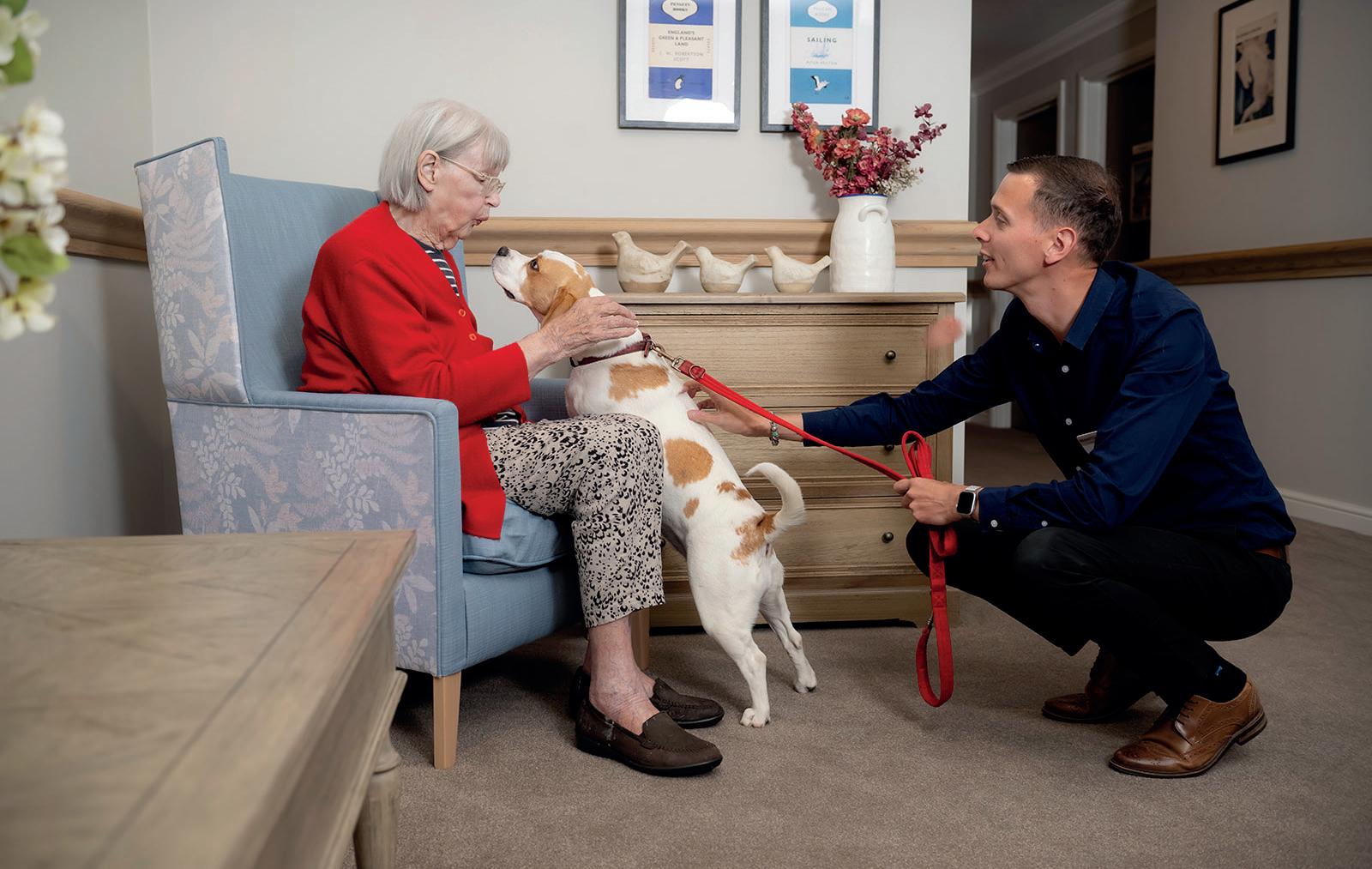
guitar playing, instruments, and a cappella. These sessions are reminiscent, uplifting, and deeply creative, encouraging residents to express themselves in ways that spark joy, connection, and shared memories. It’s a perfect reflection of the Boutique Care Homes approach inclusive, heartfelt, and full of meaning,” Hollie finished.
At Brampton Manor, the team believe that every day should bring something meaningful for residents, whether that’s a lively group activity, a peaceful morning spent reading, or simply a cup of tea and good conversation.
Valda Rayner, Head of Lifestyle and Wellbeing at Brampton Manor, said “Our activities calendars are thoughtfully designed to offer something for everyone, from those who enjoy social interaction and shared experiences to those who prefer quieter, more reflective moments.”
Valda explained how she and the team also take the time to truly get to know each resident, their stories, passions, and preferences, so the activities reflect who they are. “Our dedicated Lifestyle Teams plan a balanced variety of experiences,
from community events and group sessions to one-to-one activities that nurture wellbeing and personal connection,” said Valda.
At Brampton Manor, it is through regular resident meetings, feedback discussions, and informal chats, that ideas and suggestions are gathered to make sure the home’s plans truly reflect their interests, abilities, and aspirations. “Their voices are at the heart of everything we do.
“Because for us, care is about more than support, it’s about helping every resident live a life full of purpose, laughter, and choice,”
Valda commented.
At Loveday, everything begins with the team truly getting to know their Members. When someone joins Loveday, staff take time to carry out a detailed Lifestyle Assessment, working closely with both the Member and their family. “This helps us understand their background, routines, passions and the things that bring them comfort or joy,” said Xenia Petunova, Lifestyle Partner at Loveday.
From there, the team design a calendar that reflects the diverse interests and personalities of the Loveday community - from lively,
social gatherings to quiet, sensory, or creative sessions – there’s always a balance.
Xenia explained, “Many of our facilitators also offer one-to-one sessions, allowing Members who prefer more personal or peaceful activities to continue exploring their interests at their own pace. Each month, we introduce a new theme such as Art & History or Culture & Diversitym, which helps us blend familiar favourites with something fresh and inspiring. It keeps things engaging, inclusive and full of life.”
In terms of striking a balance and curating an activities calendar with the perfect mix for residents to be engaged without becoming overwhelmed, the Loveday team are very mindful of creating the right rhythm to each day. “At Loveday, our schedule usually includes three to four activities, carefully arranged to keep the day stimulating but never tiring,” said Xenia.
She continued, “If the morning involves something active, such as movement or exercise, the afternoon might bring a calming, sensory or music-based session. We brief all our facilitators and

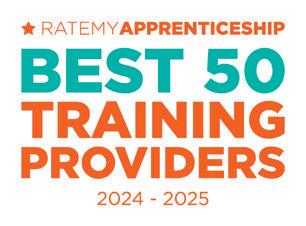

Why choose apprenticeships?
• Empower your people.
95% of apprentices said learning helped them perform better in their job. Our award-winning, hands-on training equip apprentices with the skills and confidence to make an immediate impact in your setting.
• Flexible learning to suit your setting. 94% of apprentices learned new skills during their learning. Our apprenticeship programmes can be tailored to suit your business needs.

Discover more on our Adult Care Apprenticeships and Commercial Courses.
We offer Adult Care apprenticeships in...
At Paragon Skills, we specialise in Adult Care. From Entry Level 2 to Leadership Level 5, our industryleading apprenticeships and commercial courses are designed to transform your care employees into confident, skilled professionals who make a real difference. and offer Care Commercial Courses in...
Adult Social Care Certificate Level 2 6 Months | £1,500 + VAT
Diploma in Adult Care Level 3 10 Months | £1,400 + VAT

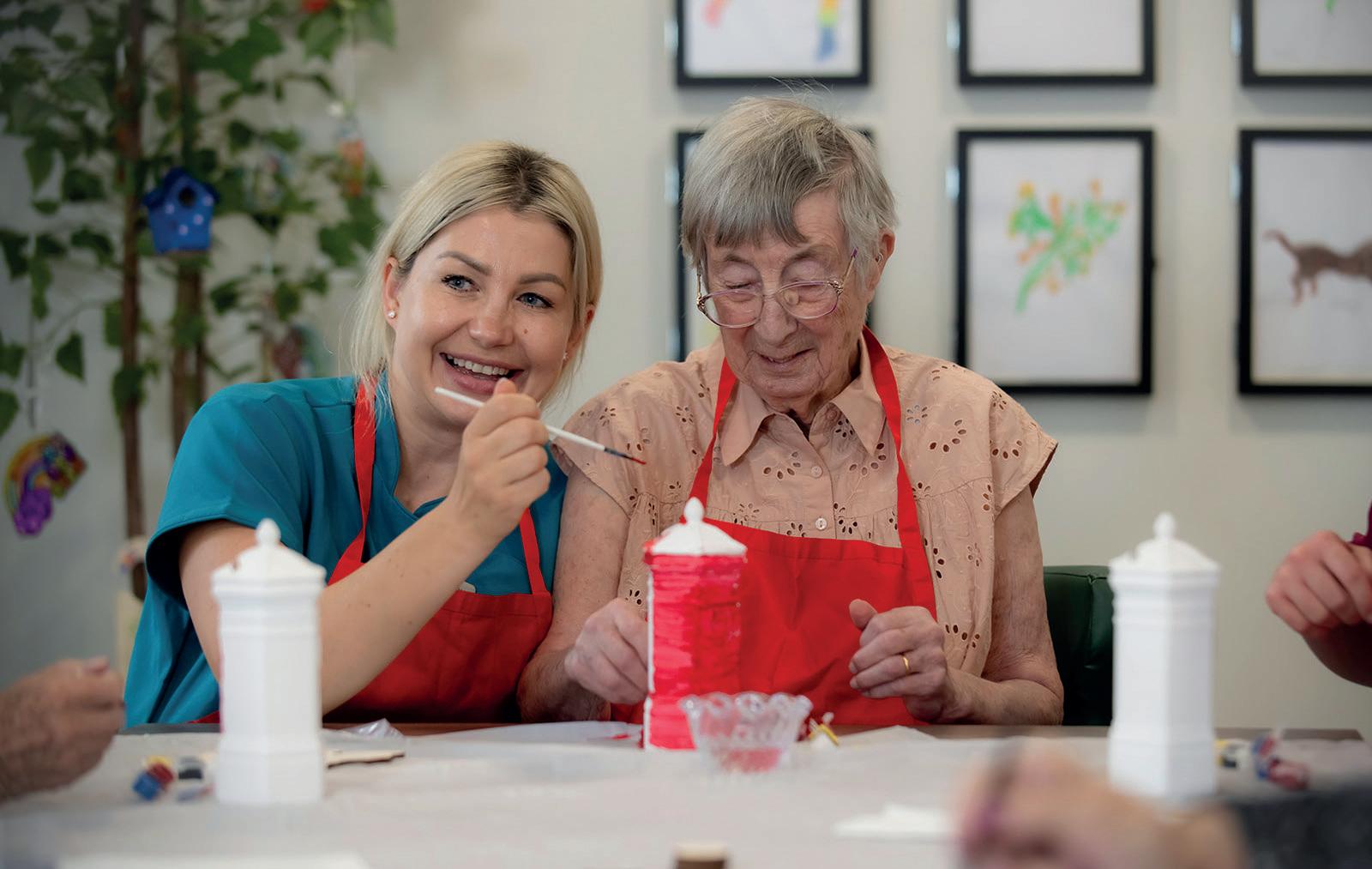
musicians so they understand the tone we want to create, for example, whether a session should uplift, soothe or simply offer gentle enjoyment.”
Behind the scenes, the Loveday team work closely together to make sure the day flows naturally and Members always feel energised, relaxed, and supported, not overstimulated.
When it comes to getting Members involved in the planning process for these activities, Xenia said, “Our Members are at the heart of everything we do, so their voices shape the calendar in many ways.” Every other week, the Loveday homes hold a ‘Meet the Team’ session, where Members share feedback and ideas about what they’d like to do, celebrate, or experience next.
Xenia revealed that the team also have lots of one-to-one conversations throughout the week, “those small chats often spark wonderful ideas.” She continued, “Recently, one of our Members mentioned how much she missed cooking for her family. Together with our chef, she created and led her own cooking session, recreating
her favourite family recipe. It was beautiful to see her share her story through food.”
Families of the Loveday Members often contribute ideas too, both in person and by email. Loveday staff are encouraged to share their own suggestions anonymously too, through an internal feedback channel – “it’s amazing how often a small observation can lead to something special,” commented Xenia.
One touching example was a member who discovered that one of the team spoke the language she’d been trying to learn. Xenia explained, “They began reading poetry and chatting in that language every day, building a truly meaningful connection. Those moments of shared humanity are exactly what Loveday is all about.”
The team at Loveday are constantly inspired by the creativity and spirit of their Members. “Many of our most successful activities have come directly from their stories and passions.
“For instance, we often host themed lunches that celebrate where our Members come from - complete with traditional food,
music and memories. We’ve also organised art sessions where Members create handmade cards or artwork for family celebrations, such as a grandchild’s birthday” finished Xenia.
These experiences bring together everything that is valued at Loveday - inclusion, creativity and connection.
In every thriving care home, from The Burlington to Loveday, one message shines through clearly - meaningful engagement is at the heart of exceptional care. Creating an activities calendar isn’t simply about filling time; it’s about enriching lives. Through thoughtful planning, open collaboration, and genuine connection, these homes ensure every day offers opportunities for residents to express themselves, find joy, and feel part of a vibrant community. Whether it’s through art, music, conversation, or quiet reflection, the emphasis on individuality, inclusion, and wellbeing transforms daily routines into purposeful moments, reminding us that true care celebrates both the big and small joys of living well.


This month, we shine a light on resident-led activities and how care homes can empower residents to lead the way - proving that age and ability are no barriers to creativity, leadership, or community spirit.

As the crisp November air ushers in shorter days and cosy evenings indoors, it’s the perfect time for care homes to celebrate the power of community, and who better to lead the way than the residents themselves? Resident-led initiatives don’t just fill the calendar with engaging activities; they foster purpose, pride, and belonging. When residents take ownership of ideas, projects, and events, they transform their home into a thriving, collaborative community.
Traditionally, activity programmes in care homes have been designed for residents. Increasingly, the
best are now being designed with them and even by them. The shift toward resident-led initiatives gives older adults a sense of agency and ownership that is deeply rewarding.
When residents suggest, plan, and run activities, they are not only keeping busy, they are expressing themselves, sharing skills, and connecting with others on their own terms. Whether it’s a garden club, a newsletter team, or a fundraising project, these initiatives encourage everyone to see residents as contributors and creators.
Resident-led projects can take many forms, large and small.
At Holbeach Meadows Care Home, part of Tanglewood Care group, the home holds two big community events each year – a summer family funday or fair and a Christmas fair. Gemma Woodcock, the Home Manager, revealed how her team is led by the residents with these events. She said, “They work alongside the lifestyles coordinators to create the amazing days we have held. The residents will have a meeting to discuss themes, which will go to a vote, they will choose what props and decorations they would like and what games they would like us to have for the fair.

“They also go out for walks with the team to drop leaflets in the local area about the event. The residents then make the props for the games, such as painting a treasure map. They will choose the names for guess the name of the fluffy toy, sort out the sweets for guess the number of sweets in the jar and they prepare the tombola.”
On the day, the residents are be supported by the team to take it in turns to man the stalls as well as visit and play the games themselves – a great example of getting residents involved!
The benefits of empowering residents to lead go far beyond the immediate joy of the activity itself. When residents are given responsibility and trust, they experience renewed confidence and self-worth. It can improve mental wellbeing, enhance cognitive function through problem-solving and planning, and strengthen social ties.
Staff, too, benefit from the shift. Activity coordinators often report that resident-led programmes spark new enthusiasm among the team
and deepen their understanding of what truly matters to those they care for. In turn, this collaborative approach often improves morale, reduces isolation, and makes the care environment more vibrant and inclusive.
Families will also love to see their loved ones take on meaningful roles, especially when they can join in.
For care homes looking to cultivate more resident-led initiatives, it starts with one simple principle: listen. Hold regular idea-sharing sessions or “resident councils” where suggestions are welcomed, discussed, and acted upon. Even small decisions, such as what theme to choose for a film night, can make residents feel their voices count.
Encourage residents to use their talents. A retired teacher might want to run a quiz. A former gardener could lead a planting session. Someone with a knack for music might host singalongs or curate playlists for different moods.
It’s also important to provide gentle support. Some residents
may need help organising or facilitating activities, especially in the early stages. Staff can act as enablers rather than directors, helping residents bring their visions to life.
Finally, celebrate the successes, however modest they may seem. Display photos, write about achievements in newsletters, and thank residents publicly for their leadership. Recognition reinforces the message that their contributions are valued and impactful.
As we head toward the festive season, November is a natural time to reflect on gratitude and togetherness. Resident-led initiatives embody those values beautifully. They remind us that care homes are not just places of care, they are communities full of life, creativity, and heart.
By encouraging residents to take the lead, care homes can create a culture where everyone belongs, everyone contributes, and everyone shines.


Our mission is simple: to empower care home owners, investors, and operators with the knowledge, resources, and support they need to thrive in this vital industry. Whether you’re a seasoned operator looking to expand your portfolio, a first-time buyer entering the market, or an owner considering your exit strategy, Montane Care is here to guide you every step of the way.


For most people, Christmas brings to mind images of laughter, family gatherings, and festive cheer. But for many older adults living in care homes, the season can also highlight feelings of loss, loneliness, or separation from loved ones. Care home staff play a vital role in supporting residents through this sensitive period, not just by decorating and arranging parties, but by offering compassion, and a listening ear. Here are five practical and heartfelt ways care staff can help residents feel connected and valued throughout the festive season.
While Christmas is often associated with joy, it can also stir powerful emotions. Many residents may think of loved ones who have passed away or traditions they can no longer take part in. Creating gentle opportunities for remembrance can bring both comfort and meaning. Staff could organise a “memory afternoon,” where residents can share stories, photographs, or mementoes of past Christmases. A memory tree or reflection corner can also provide a quiet space for residents to hang notes, decorations, or pictures in tribute to people they miss. These moments of reflection shouldn’t feel heavy or sombre, they can be peaceful, even uplifting. The key is to listen without rushing.
Festive activities can lift spirits and foster a sense of community, but not everyone feels ready to celebrate in the same way. Some residents may find large gatherings noisy or overwhelming. Offering a variety of options, from small craft sessions to one-to-one decorating activities, ensures everyone can take part in a way that feels right for them. However, it’s equally important to respect those who prefer quieter celebrations. A simple “Would you like to join in, or would you rather watch for a bit?” can make all the difference.
Staying connected with loved ones is crucial during the holidays, especially for residents who may not receive regular visits. Staff can play an essential role by helping residents make phone or video calls, write cards, or record short messages to send to family members. Inviting the local community into the home can also create meaningful interaction - whether it’s schoolchildren singing carols, volunteers helping with crafts, or local church groups offering festive visits. Even small gestures, like homemade decorations from local children, can bring immense joy and a sense of belonging.
Emotional wellbeing often needs a little extra care during the festive season. Changes in routine, memories of loss, or the general bustle of Christmas can sometimes lead to sadness or withdrawal. Staff can support residents by noticing changes in mood and checking in gently. A few minutes of conversation, reading a favourite poem, or simply sitting together over a cup of tea can make a world of difference. For residents who seem especially low, involving activity coordinators, wellbeing teams, or mental health professionals can ensure they get the support they need.
5 4 3 2 1
Not all residents will celebrate Christmas in the same way, if at all. Being sensitive to different faiths, cultures, and personal preferences is key to helping everyone feel respected. Activities can focus on universal themes such as gratitude and togetherness rather than just Christmas itself. Residents might enjoy helping to plan how the home celebrates, choosing decorations, music, or charity projects.

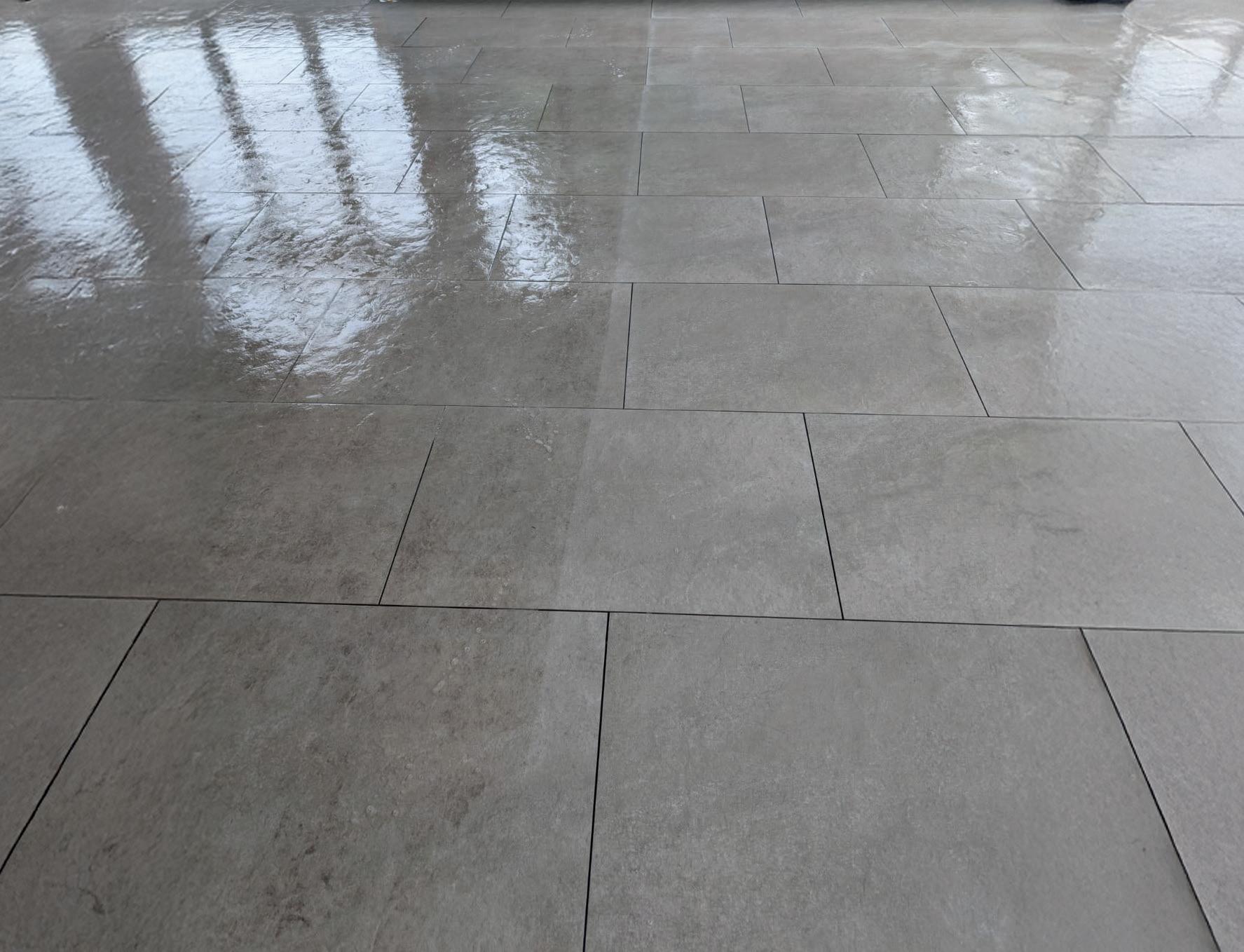
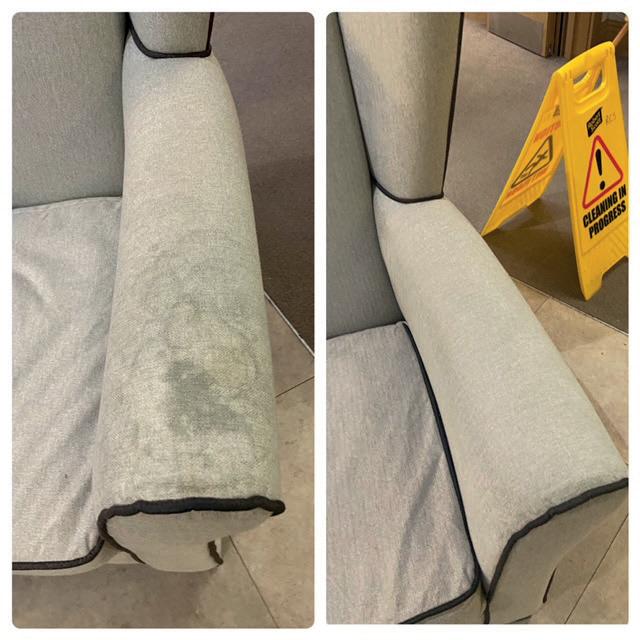
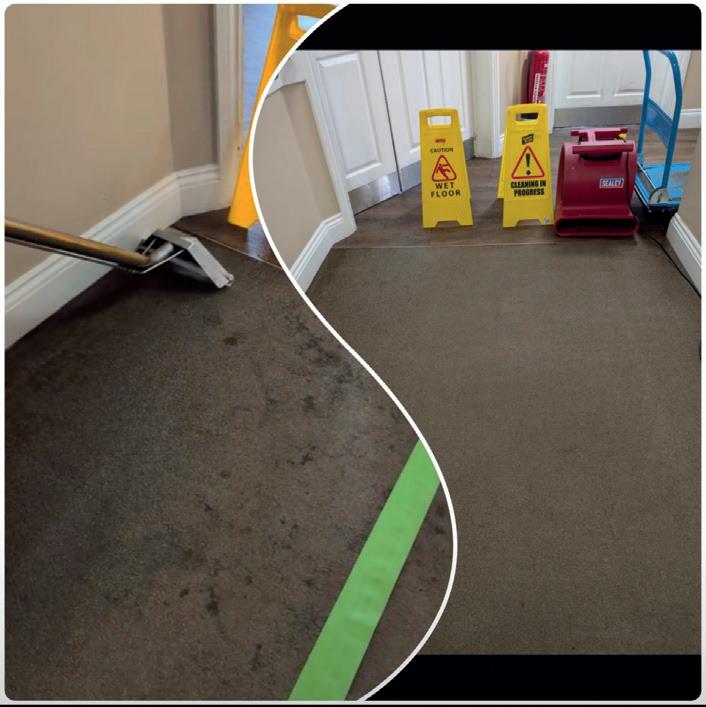
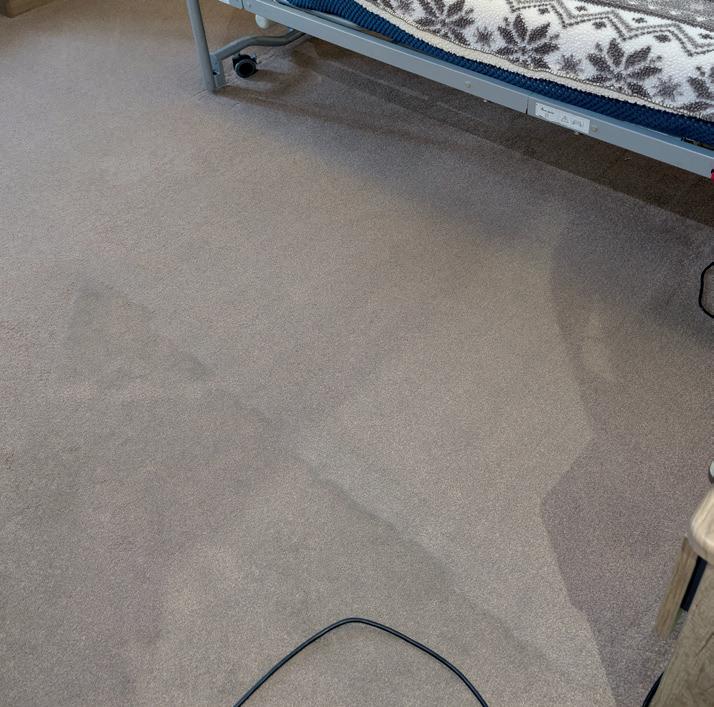



This Christmas, we look at how you can adapt residents’ personal traditions, including foods, songs and décor into the home’s celebrations, in order to keep traditions alive and spark a sense of belonging.
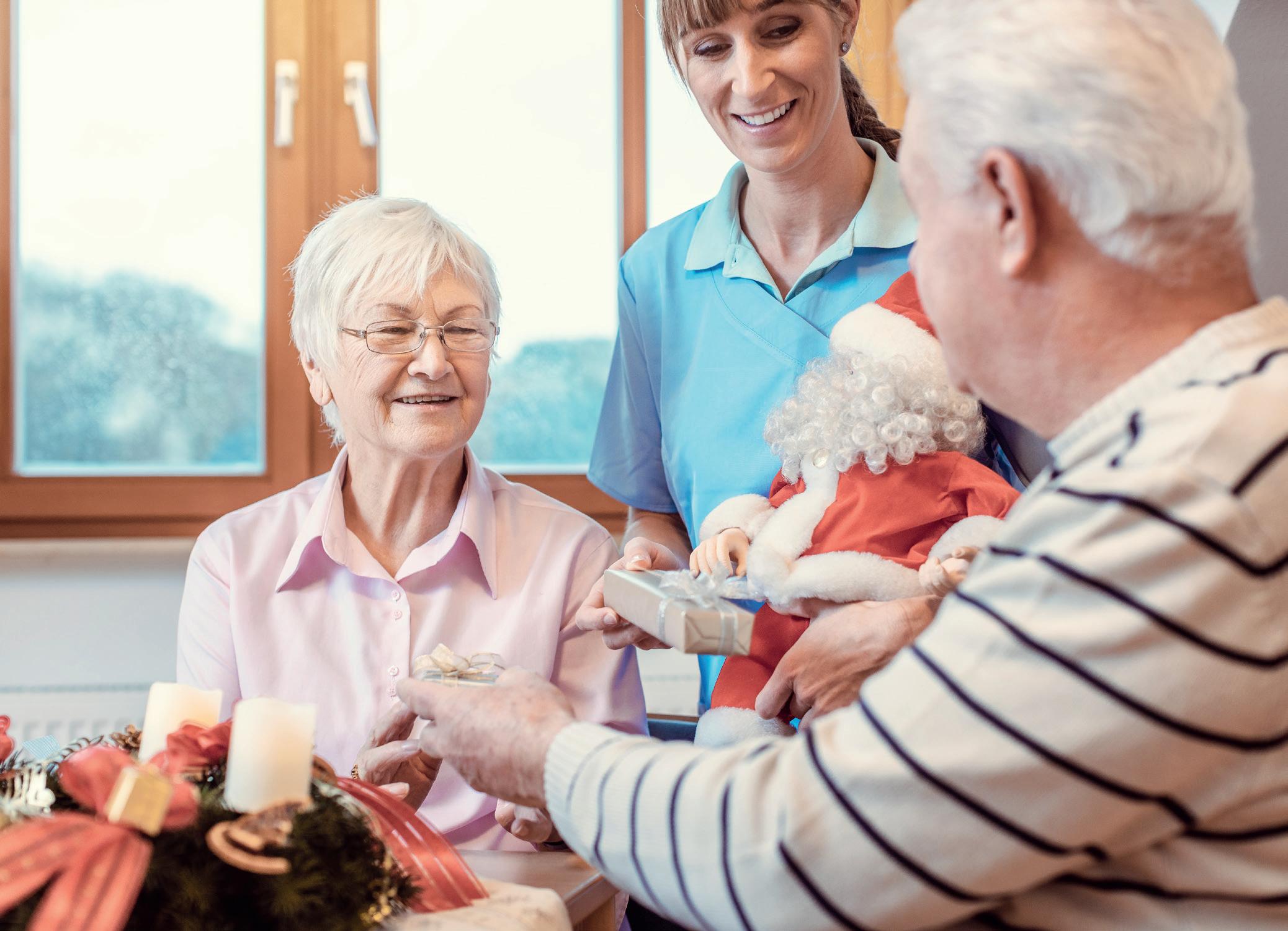
Christmas is rarely one-sizefits-all. For many older people, the season is a tapestry of family recipes, favourite carols, table rituals and small customs that carry a lifetime of meaning. For care homes, helping residents keep those threads alive isn’t just sentimental, it’s central to wellbeing, identity and genuinely person-centred care. We look at practical ways care homes can weave residents’ personal traditions into communal
celebrations, and why doing so pays dividends for mood, memory and community.
Traditions anchor identity. Research and practitioners agree: familiar smells, songs and rituals unlock memories, soothe anxiety and spark conversation. For residents living with dementia, a traditional mince pie recipe or the scent of orange and clove can prompt a smile, a story or a meaningful connection with staff and visitors. Beyond individual
benefits, shared traditions strengthen the home’s social lifefamilies recognise and appreciate cultural sensitivity, and staff morale lifts when they see residents engaged and joyful.
There are an array of simple ways to adapt personal traditions. Start with the conversations and spend time asking residents (and families) about their Christmases. A quick “What did December look like in your childhood?” can reveal treasured foods, religious
observances, songs or small rituals, such as opening one gift on Christmas Eve or placing a sprig of holly on the table. Record these details in residents’ care plans so they inform every year’s celebration.
Food is a powerful memory trigger. Where possible, incorporate residents’ favourite dishes into the menu. If a resident grew up with a Glasgow-style Christmas pudding, a small portion served alongside the main lunch can be immensely meaningful. For residents with dietary or religious needs, adapt recipes (e.g., vegetarian, sugar-free) while keeping the familiar flavours. Consider themed communal lunches or a “Caribbean Christmas” roast one evening, based on residents’ backgrounds.
Christmas carol sessions are a staple, but make the playlist personal. Ask which hymns, carols or seasonal tunes residents remember. Invite families or local choirs to perform communityspecific songs. For residents with limited mobility, provide lyric sheets with large print and encourage hand-held percussion to make participation easier.
Décor needn’t be generic. Display ornaments or keepsakes that reflect residents’ histories: vintage postcards, a family nativity set, or craft displays made with residents’ grandchildren. Create a “tradition tree” where each resident pins a card describing a long-held custom; by reading them aloud at breakfast or during carol sessions you create a living archive.
Preserving small rituals is key: a resident who always opened a door for guests can be given a “welcoming” role during a lunch; someone who loved handing out homemade crackers might lead a table. Even structured timesspecific days for mince pies, carol practice schedules - support comfort through routine.
You can look to invite families to bring recipes, ornaments or a recording of a family carol. Local schools, scouts or faith groups often welcome intergenerational visits and these also give residents an opportunity to share traditions

• Improved mood and engagement: When celebrations reflect residents’ lives, participation rises. Engaged residents show fewer signs of anxiety and social withdrawal.
• Stronger family relationships: Families who see their loved ones recognised are more likely to visit and support the home, improving reputation and community ties.
• Enhanced person-centred care: Documenting and delivering traditions demonstrates a meaningful, individualised approach — vital for CQC inspections and best practice evidence.
• Staff satisfaction and skills: Planning bespoke events challenges the team creatively and builds cultural competence, boosting morale.
• Build a “Tradition File” for each resident in care records. Keep onepage summaries easy for agency staff to read.
• Use volunteers and students for craft sessions and to help record oral histories that staff can turn into posters or short videos (with consent).
and feel valued.
Christmas is not just one day, it’s a season of stories. By listening, recording and adapting residents’ personal traditions, care homes create richer, more inclusive
• Designate a festive lead - a staff member or volunteer - to coordinate menus, playlists and family liaison.
• Keep accessibility front and centre: large-print lyrics, assisted seating at meals, and sensoryfriendly spaces for residents who find crowds overwhelming.
celebrations where people are seen for who they are. Whether it’s a slice of a childhood pudding or an old wartime carol, these small rituals bring joy, restore dignity and make the home feel more like home.
In line with the festivities, this month, V for Life (VfL) shares a recipe guide this delicious Christmas Clementine Cake, bound to be loved by all!
Vfor Life (VfL) was launched to ensure that people can maintain their veganism or vegetarianism (veg*nism) throughout their whole lives. The organisation support those living independently as well as those in care and their loved ones by providing services such as diet and healthy living advice, through to grants and a pen and phone-pal scheme.
People rarely envision themselves needing care when they get older. Yet 410,000 people – about the population of Bristol – live in care
• 500g/18oz unwaxed clementines*
• 165ml/1/3 pint aquafaba
• 170g/6oz sugar
• 250g/8¾ oz ground almonds
• 1 tsp baking powder
• 2 tsp vanilla extract
• Pinch fine salt
*If you can’t find unwaxed clementines you can place them in a bowl and pour boiling water over them until they are completely submerged. Leave for 5 minutes before washing in cold water.
For the topping:
• Two unwaxed clementines
• Half an unwaxed lemon
• 50g/1¾oz granulated sugar
• A couple of sprigs of rosemary
• Icing sugar to dust
Preparation time: 15 minutes
Cooking time: 1 hour, 10 minutes
Serves: 8
homes in the UK today. Currently, veg*ns make up only a very small amount of these care homes’ residents, but the number is rising.
VfL is working across the UK to make sure that care establishments can cater well and ethically for older veg*ns. They seek to do this through our UK List, which details every organisation and care home that makes a special effort to cater for older vegans and vegetarians.
The Christmas Clementine Cake makes an excellent alternative Christmas dessert, it’s very moist, more like a pudding and delicious with custard. You can use the topping idea detailed below or your own favourite festive topping.
1. Preheat the oven to 180°C/160°C fan/gas mark 4. Lightly grease a 20cm round baking tin and line with a large single sheet of parchment paper on the base.
2. Peel half the clementines and discard the peel. Leave the remaining clementines with the peel intact. Cut all the clementines into quarters. Place all peeled and unpeeled clementines in a food processor, and process for 30 seconds, or until smooth.
3. Place the aquafaba and sugar in a large mixing bowl and using an electric beater, beat them for 3–5 minutes. Once the mixture starts to turn white, add the puréed clementines and beat it for another half minute or so.
4. Add the ground almond, baking powder, vanilla, and salt and beat the mixture until it’s well combined and a smooth batter forms.
5. Pour the batter into the prepared tin and spread evenly. Bake for 50–60 minutes, or until the cake feels firm to the touch. Allow to

cool then transfer to a wire rack and let it cool completely.
1. Peel one of the clementines and cut the peel into thin 0.5cm strips. 2. Juice the other clementine and the half lemon and pour the juice into a small saucepan with the strips of clementine skin, sugar, and the leaves from the rosemary sprigs.
3. Place the saucepan on a high heat, bring it to a boil, and then turn the heat down to the lowest setting and simmer it for about five minutes, until all of the sugar is dissolved.
4. Using a toothpick, prick holes in the top of the cooled cake and then gently pour the topping over the cake. Dust with icing sugar. Stored in a sealed container, this moist cake will keep for three to four days.
vforlife.org.uk
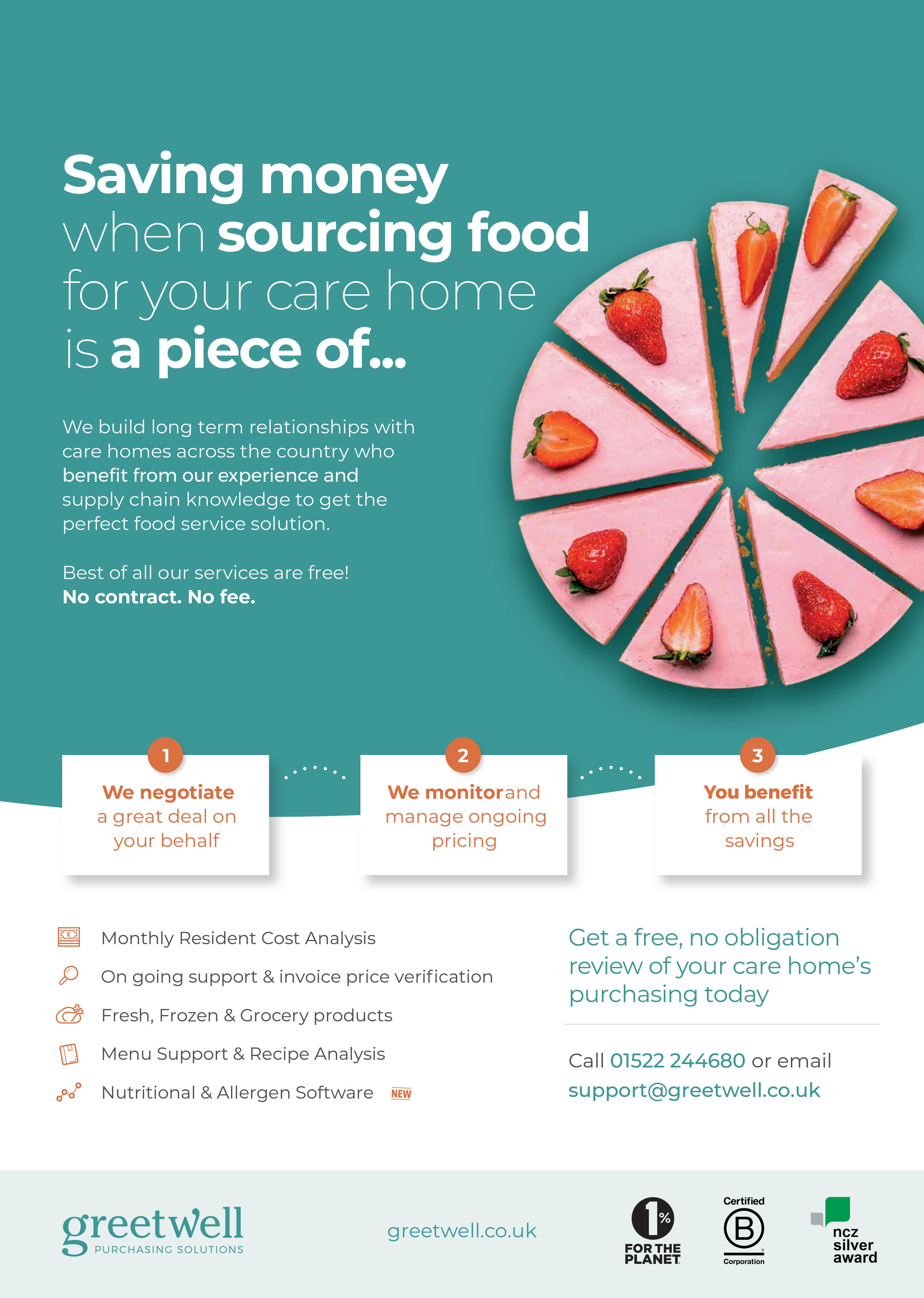
Through
Creating a comforting, uplifting environment is at the heart of every successful care home. From décor to music, every detail shapes how residents, team members and visitors feel within a space - yet one of the most powerful elements is often overlooked: fragrance.
At EcoScent, we help care homes enhance wellbeing, comfort and connection through expertly crafted fragrance solutions. Using advanced scent diffusion technology, our systems make it effortless to fill any space with a consistent aroma - from soothing Lavender in calm lounges to invigorating Citrus in communal areas. Each fragrance is carefully blended from high-quality essential oils to complement your environment and enrich daily experiences.
As the festive season approaches,
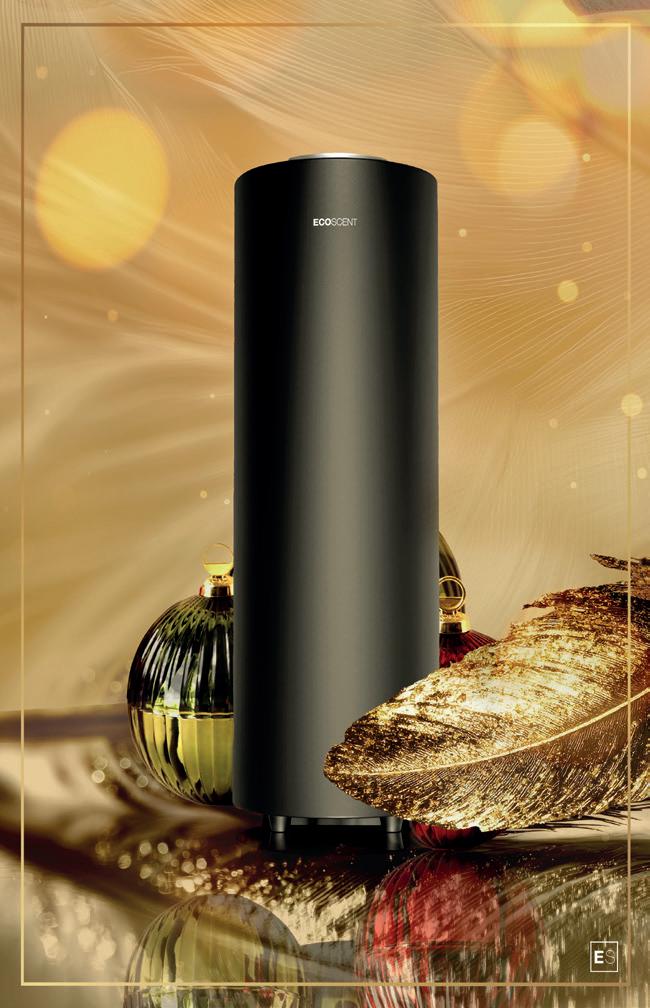

fragrance becomes an especially meaningful way to uplift and comfort. Scents such as Cinnamon, Orange, Clove and Pine evoke cherished memories of home, family and celebration. For residents, these familiar aromas can gently spark recognition and positive emotions, particularly for those living with dementia. For team members and visitors, a festive fragrance nurtures warmth, cheer and togetherness during one of the busiest times of the year.
This Christmas, why not pick your signature scent? EcoScent offers a curated selection of festive and year round fragrances, allowing each care home to choose the scent that best reflects its atmosphere and values. Whether it’s the cosy embrace of Cinnamon & Clove or the refreshing brightness of Citrus Grove, your chosen scent becomes part of your community’s identitycreating a space that feels instantly
welcoming and memorable. Our sustainable, cruelty-free fragrances and discreet diffusion systems make it easy to refresh your ambience throughout the year - from crisp spring florals and fresh summer blends to cosy autumn spices and festive winter warmth. Whatever the season, the right fragrance can elevate your atmosphere, boost morale and foster emotional connection.
This Christmas and beyond, let EcoScent help you create spaces that comfort, inspire, and truly care.
Discover how our scents can enhance wellbeing, create calm, and bring joy to residents’ everyday experiences.
Scan the QR code to learn more and explore our full care home range:

CiUK is the only Registered Inspection Body in the UK and will undertake your inspection professionally and comprehensively to all applicable standards. This is much more than just a ‘mock inspection.
The CiUK report is confidential and will provide a complete analysis of all compliant and non-compliant aspects of the care home. All evidence is available to the customer and supported by source data to improve the care home.
The action plan contains detailed information to correct all non-compliances that can be used as they are or added to the home’s action plan.
The CiUK team will provide advice, information, and documents to support the care home in continuous improvement and resolving non-compliance after the inspection.
only Registered and Accredited Inspection Body for Care Homes in the UK.
Striking the right balance between indulgence and cost control in care home catering this Christmas.

Christmas is a highlight of the year for many care home residents. It brings plenty of nostalgia and excitement – often centred around food. From traditional roasts to rich puddings and seasonal treats, festive catering plays a key role in resident wellbeing and connection during the winter months.
But delivering a memorable Christmas dining experience in a care setting comes with its challenges – not least the growing pressure on your budgets. Rising food prices and staffing costs have made careful planning and cost control more important than ever in 2025.
So how can you offer festive indulgence without overspending?
Start your Christmas menu planning well in advance. Early communication with your suppliers or procurement partner can help secure better prices and reduce the risk of substitutions or shortages. Pre-ordering core festive items ensures availability and helps with your budgeting.
A well-curated Christmas menu doesn’t need to be extravagant to feel indulgent. Focus on a few quality dishes done well. Familiar flavours and nostalgic favourites will be appreciated by your residents much more than novelty – and are easier to manage both logistically and financially.
It’s essential to ensure that every resident, regardless of dietary needs, can enjoy the festive experience. From fortified options to modified textures, inclusive planning means no one misses out – and it also prevents last-minute catering challenges.
Festive food doesn’t have to be overly rich to feel special. “Christmas can be healthy and indulgent,” says Tess Warnes, allmanhall’s Registered Dietitian. “It’s about flavour, colour and creativity – not just fat and sugar.
Roasted winter vegetables are full of vitamins and minerals when you go for those in season. Spiced fruit desserts can be made with frozen berries to cut costs without compromising on their nutritional content. Dishes can still bring joy while supporting nutritional needs.”
Accurate tracking of ingredient costs, portion sizes, and waste can help keep budgets on track. Many care settings are adopting more data-led approaches to menu planning and procurement, allowing them to balance cost and quality more effectively.
With thoughtful planning and smart resource management, care homes can offer festive feasts that are joyful, nutritious – and within budget.
allmanhall.co.uk


How to check your third-party supplier’s credentials without being a tech whiz, as told by Michelle Corrigan, Programme Director, Digital Care Hub.
“Trust us, we’re secure!” Are they though? If your care service outsources IT, you might think cyber security is automatically covered. But sadly, it isn’t.
IT keeps the computers running. Cyber security keeps them safe from threats. They’re like nursing and care - related, overlapping, but not the same job. You need both.
And here’s the sting: if your supplier has a cyber breach, it’s still your data, your reputation, and your compliance on the line. The ICO can still hold you responsible for their mistake. That’s why the Data Security and Protection Toolkit (DSPT) asks whether your suppliers have proper cyber documentation in place.
Cyber threats are on the rise, and digitised records make the stakes steep. A single breach can disrupt care, erode trust, and cost

thousands. In fact, according to the Department of Health and Social Care, providers report spending around £9,500 handling cyber incidents over just three years.
Don’t just take a supplier’s word when they say they “take security seriously” or are “industry compliant.” Without proof, these are red flags, not reassurances.
Look instead for solid, verifiable certifications:
• Cyber Essentials: iasme.co.uk/ cyber-essentials/ncsc-certificatesearch
• ISO 27001: ukas.com/find-anorganisation
• SOC 2: soc2.co.uk/index
Cyber vetting sounds complicated, but it doesn’t have to be. You don’t need a tech degree, a hoodie, or a darkened room full of blinking screens to check your supplier. You can do a basic, meaningful check in the time it takes to make a cup of tea:
1. Ask what certifications they have (Cyber Essentials, ISO 27001, SOC 2).
2. Verify it online and check it’s in date, with the correct address.
3. Ask one open cyber question, such as what happens if there is a data breach or attack on their system.
If you ask your supplier yes/ no questions, you’ll usually get the answer you want to hear. Open, specific questions push suppliers to show how they work in practice, not just in theory. It’s the difference between “Do you have a business continuity plan?” and “When did you last use it, and what
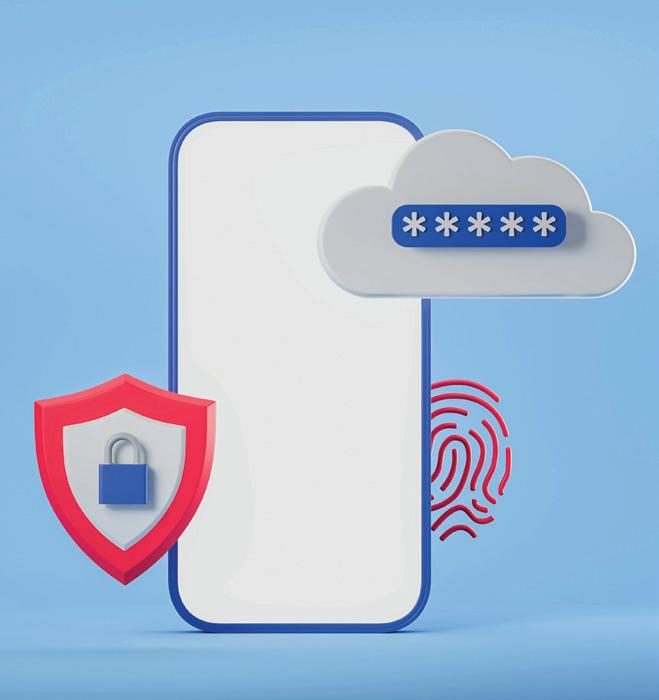
happened?” One tells you very little, the other tells you everything you need to know.
Cyber attacks aren’t just for big companies. Care services hold valuable personal and medical information, making them a prime target. Running a care service with outdated supplier checks and no evidence is like leaving the front door open with a neon sign saying “get free data here.”
Be curious, not combative. Because at the end of the day, “trust us” isn’t a security policy. Asking for proof isn’t distrust, it’s care.
And you don’t have to go it alone. The Better Security, Better Care programme offers a national and local support network offering one-on-one help to care providers working through the Data Security and Protection Toolkit – the free online data protection and cyber security self-assessment - which covers this issue! The support is free and fully funded by the Department of Health and Social Care.
www.digitalcarehub.co.uk/ bettersecuritybettercare

In an insightful interview with Barry Vacher, Head of Marketing and Business Development at Courtney Thorne, we find out how the brand is helping to level up care homes through their innovative technology.

Courtney Thorne has been a pioneer in nurse call systems since 1968. How has the company’s mission evolved over the decades, particularly in response to the changing needs of care homes?
Since 1968, Courtney Thorne has been at the heart of communication innovation in care. What began as a mission to provide reliable, easy-touse call systems has evolved into a commitment to create smarter, safer, and more connected care environments.
Over the decades, care homes
have faced growing challenges - from rising resident acuity and staffing pressures to increasing regulatory demands. Our mission has evolved in step with these changes: to design technology that not only alerts, but also empowers care teams with insight, efficiency, and reassurance.
Today, we see our role not just as a system supplier, but as a longterm partner in care quality. Our solutions are built to evolve with the sector, integrating wireless innovation, data analytics, and remote management tools to help care providers deliver the very best standards of safety and wellbeing.
Your latest Connect Range mobileintegratestechnology with nurse call systems. What specific challenges in care home environments does this innovation address, and how does it enhance both staff efficiency and resident safety?
The Connect Range was created in direct response to feedback from care homes facing increasing workloads and staff shortages. Traditional nurse call systems were highly effective for alerts, but they didn’t always provide the
flexibility and visibility modern care environments need.
With Connect, we’ve brought together our trusted wireless nurse call technology with mobile communication. Staff can now receive alerts directly on mobile devices, respond instantly, and record actions digitally, all without needing to return to a nurse station. This reduces response times, ensures accountability, and allows teams to spend more time where it matters most - with residents.
From a safety perspective, the system’s intelligent logging and reporting features provide realtime oversight of calls, response patterns, and potential areas for improvement. It’s technology designed to simplify care, improve communication, and enhance resident confidence in every interaction.
With
the emphasisincreasing on data- driven care, how do Courtney Thorne’s systems support care home managers in monitoring and improving service delivery?
Data-driven care is transforming the way care homes operate, and our systems are designed to support that shift seamlessly. Through tools like CT Cloud Remote Reporting and the Altra Go mobile app,

care home managers gain instant access to detailed activity reports, call histories, and performance dashboards.
This data helps managers:
• Identify trends in response times and resident needs
• Improve staffing efficiency and workload distribution
• Demonstrate compliance with CQC and internal quality standards
• Proactively address risks such as frequent call-outs or delayed responses
By turning call data into meaningful insight, we help care providers move from reactive management to proactive service improvement, empowering them to make informed decisions that

enhance both safety and quality of care.
Tell our readers about how they can work with you and the benefits of doing so.
Working with Courtney Thorne means partnering with a team that understands care from the inside out. We don’t just provide systems, we provide end-to-end support, from initial consultation and system design to installation, training, and ongoing maintenance.
Every care environment is unique, so we take the time to understand each client’s operational and clinical needs. Our UK-wide team of experts works closely with care home groups, architects, and facility managers to deliver tailored, futureproof solutions.
Our customers benefit from:
• Over 55 years of sector expertise
• Solutions designed and manufactured in Great Britian
• A dedicated 24/7 365 customer support team
• Scalable technology that adapts as care needs evolve
• Ongoing product development driven by customer feedback
At Courtney Thorne, we’re proud to be more than a supplier - we’re a trusted partner in the journey toward safer, smarter, and more connected care.
nursecallsystems.co.uk
The real ROI of better sleep in care homes, as told by Thomas Tredinnick, CEO & Co-Founder, Ally Cares.

Across the UK, more homes are proving a simple point: when residents sleep well, everything else gets easier. Safer nights, calmer teams, fewer incidents — and yes, a stronger bottom line. Here’s how a sleep-first approach turns quality into sustainability.
We tend to judge quality in the daytime: mealtimes, meds, activities. But many of the best opportunities to strengthen outcomes (and protect the business) sit in the hours most of us never see. Nights are when risk peaks, staffing is leanest, and every minute matters. Protect sleep and three things happen fast: incidents fall, paperwork shrinks, and the
day shift starts on the front foot. That’s not a nice-to-have; it’s an operational strategy.
The practical playbook is straightforward: make the night visible, remove disruption you don’t need, and respond when it matters. Teams focus on three kinds of signal:
• Assistance: calling out, pain, movement.
• Wellbeing: sleep continuity, coughing, agitation.
• Environment: corridor noise, routine checks, devices cycling.
Listening before entering protects sleep for people who are safe, and
gets support quickly to those who aren’t. The payoff is fewer avoidable wake-ups, fewer incidents, and fewer “why did this happen?” reviews.
At Oaklands Rest Home, blanket checks were replaced with needsbased responses using acoustic monitoring and sleep insights. Results were decisive: 63% fewer falls and visibly calmer nights. The commercial impact followed: average length of stay rose from 81 to 89 weeks — almost two extra months of occupancy per resident — driven by better rest and family confidence, not extra headcount or marketing.

At The Lawns (Heritage Manor Group), the brief was simple: prevent falls without waking people who are safe. Proactive monitoring integrated with PCS let carers listen before entering and act only when needed. Results: 88% fewer highrisk falls, 66% fewer falls overall, 61% fewer checks, and roughly five staff hours released each night. The data also showed an early-evening activity peak, so the team moved resource into the twilight window and protected quiet through the night. Residents were 34% less restless, handovers calmed, and the same paid hours delivered more value.
At Briarscroft (Sanctuary), the aim was to cut night risk without waking people who are safe. Acoustic monitoring replaced blanket checks. Results: the nighttime share of falls dropped from circa 70% to circa 15% and total falls fell sharply. Operationally: 43% less disturbing checks, 62% less physical checks and circa 15 staff hours released per night. At a clinical level: months without pressure injuries after removing “just-in-case” night continence checks and upgrading products; earlier flags on issues like chest infections via cough-pattern insight. And commercially: steadier rotas, stronger reassurance on show-rounds, and headroom to

support higher-need residents, all without adding headcount.
• Fewer incidents means fewer investigations and transfers, less paperwork, and lower agency exposure.
• Longer stays + better conversion leads to stronger occupancy without extra marketing (Oaklands shows the pathway).
• Calmer teams supports better retention, because work feels purposeful, not reactive.
• Evidence on tap to aid better conversations with families, commissioners, and inspectors.
A sensor on a wall won’t change culture on its own, leadership will. Set the expectation that sleep is a clinical indicator, pull night insights into care-plan reviews, and use daily/monthly handovers to close loops. Do that consistently and two lines move together: quality and the P&L.
If you want safer homes, steadier rotas and a stronger balance sheet, start with sleep. It’s the most practical lever we have — and the results speak for themselves. allycares.com
Reflecting on Care Show Birmingham & Retirement Living Show 2025.
Care Show Birmingham and Retirement Living Show 2025 brought the NEC Birmingham to life once again earlier this month; two days filled with energy, connection, and conversation. The show has long been a meeting point for everyone involved in the future of care, and this year’s event proved just how strong and forwardthinking this community continues to be.
Across the halls, there was a steady buzz as more than 4,500 delegates joined us to explore the latest innovations, exchange ideas, and share their experiences. With 300 exhibitors showcasing products, technologies, and services designed to make a difference, the exhibition floor offered a snapshot of a sector that never stops evolving.
The conference programme was at the heart of the show, featuring 275 speakers and 120 sessions spanning every corner of the sector. From panel discussions and keynote addresses, to debate sessions and even a mock court inquest that sparked plenty of discussion, the programme encouraged open, honest dialogue.
We were joined by an exceptional line-up of keynote speakers, including Chris Badger, the new Chief Inspector of Adult Social Care and Integrated Care at the CQC; Dr Jane Townson from the Homecare Association; Vic Rayner OBE from the National Care Forum; and Tom Surrey from the Department of Health and Social Care. Their perspectives helped frame the big questions facing the sector, and


the conversations that followed were thoughtful, constructive, and forward-looking.
Elsewhere, each of the event’s dedicated theatres, People, Workforce & Wellbeing, Homecare, Technology, Business, Design, Build & Environments, and the Retirement Living Stage drew packed audiences. From practical advice and tangible takeaways to bold ideas about what’s next, these sessions captured the real challenges facing the sector and offered opportunities and guidance to navigate the challenging next few months.
The Outstanding Society’s Learning Lounge was as lively as ever, filled with conversation, insight, and good humour, a true reflection of the community spirit that defines the sector.
Beyond the theatres, there was no shortage of moments that brought people together. ‘Caring Conversations’ an interview series with Five on a Bike offered a thoughtful look at the themes shaping care today, giving space to voices from across the sector and diving deeper into some of the more difficult conversations.
The Care Show carousel, this year’s centrepiece, added a playful touch to proceedings, keeping with the carnival theme and drawing plenty of smiles across the show floor.
A standout highlight was the Care

Show Thirty Under 30 Awards, shining a spotlight on the next generation of care professionals. It was inspiring to see so many young leaders recognised for their talent, commitment, and innovative spirits, proof that the future of care is in good hands.
For the first time, this year’s event continued well into the evening with the Care Show After Party and what a celebration it was!
Over 700 guests joined us for an unforgettable night of music, laughter, and connection. Big Ian Donaghy and his band set the tone with live performances that had everyone dancing, and the room was filled with a sense of joy and unity that perfectly captured what the Care Show is all about.
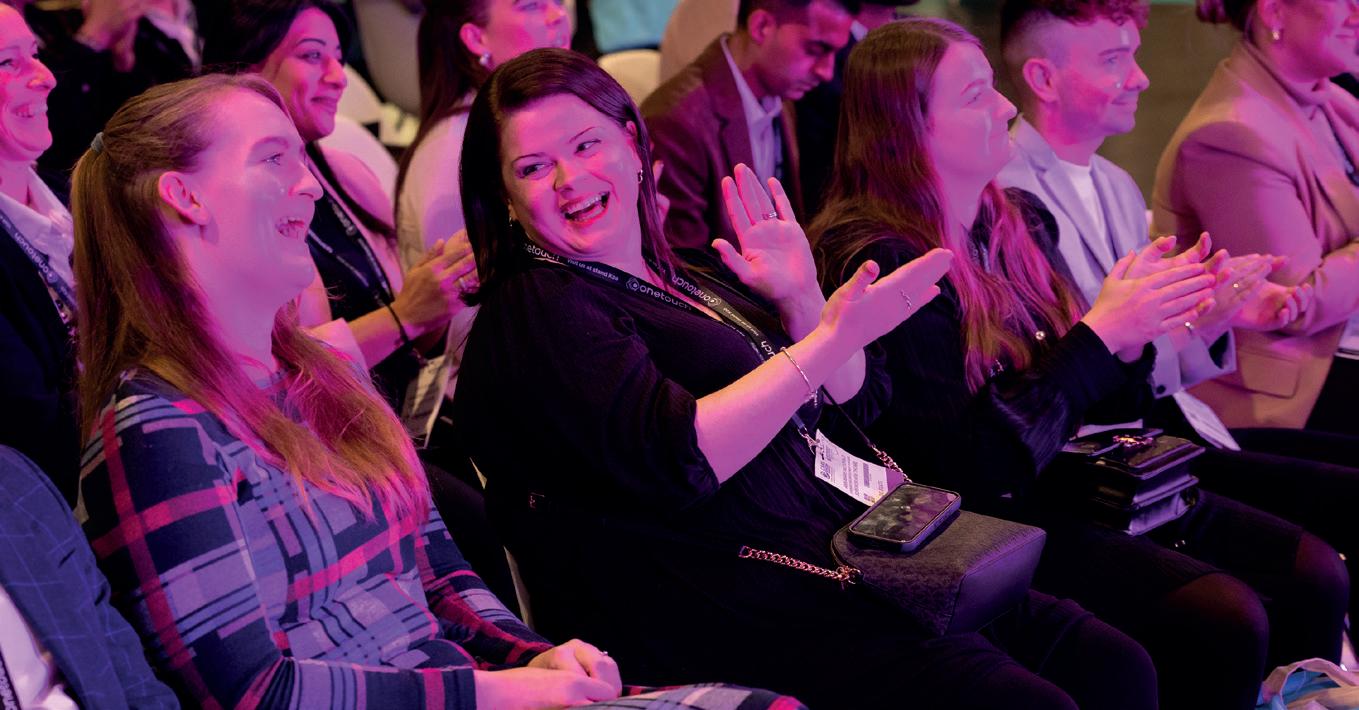
Care Show Birmingham 2025 also marked an exciting new chapter for the event with the launch of our refreshed branding. First revealed during the After Party, the new look represents more than a visual change, it’s a renewed commitment to the values that define our show.
The updated identity reflects how the sector itself is evolvingforward-thinking, innovative, and ready to embrace change.
As the Care Show continues to grow, our focus remains the same: creating a trusted space where care professionals, leaders, and innovators can come together to learn, share, and build a better future for care.
As ever, the real success of the show came down to its people: the speakers who shared their insights, the exhibitors who sparked conversations, and the attendees who brought such enthusiasm and curiosity to every discussion.
To everyone who joined us in Birmingham: thank you. Your contribution made Care Show Birmingham and Retirement Living Show 2025 a meaningful and memorable event.
We’re already looking ahead to what’s next, and we can’t wait to see where these conversations lead. Until then, keep sharing, keep collaborating, and keep caring.



Intracare
benjones@intracare.co https://intracare.co Intracare Ltd


Care Supply Store
01375 651 609
www.caresupplystore.co.uk

@caresupplystore
Care-SupplyStore-708536899310571 care-supply-store
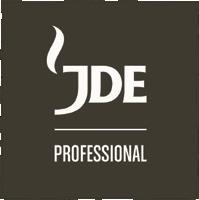
JDE Professional UK
0808 100 1030
www.jacobsdouweegberts professional.co.uk
Facilities Management
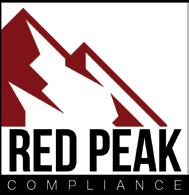
Red Peak Compliance
0208 049 2309
comply@redpeakcompliance.com www.redpeakcompliance.com

allmanhall
01225 745520
hello@allmanhall.co.uk www.allmanhall.co.uk
allmanhall
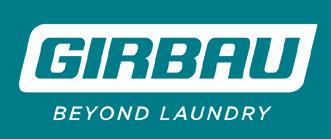

Gillman’s
0800 014 1474
commercial@gillmans.co.uk www.gillmans-commercial.co.uk

@gillmans_appliances
gillmansappliances gillmans-commercial-laundry
Girbau
01462 427780
sales.uk@girbau.com www.girbau.com Girbau girbau-uk
Miele
0330 160 6693
professional.sales@miele.co.uk www.miele.co.uk/pro/care miele-professional

EF-group
07484 521996
chriskirton@ef-group.co.uk ef-group.co.uk/healthcare ef-group-social
August International
01920 487700
audarhealth@augustint.com www.audarhealth.com/home/ carehome

@august_lab
AugustInternational august-international
